#Extreme Rules 2016 Event
Explore tagged Tumblr posts
Text
Jason Wilson at The Guardian:
In a December 2023 speech, JD Vance defended a notorious white nationalist convicted over 2016 election disinformation, canvassed the possibility of breaking up tech companies, attacked diversity, equity and inclusion (DEI) efforts and talked about a social media “censorship regime” that “came from the deep state on some level”.
The senator’s speech was given at the launch of a “counterrevolutionary” book – praised by the now Republican vice-presidential candidate as “great” – which was edited and mostly written by employees of the far-right Claremont Institute. In the book, Up from Conservatism, the authors advocate for the repeal of the Civil Rights Act, for politicians to conduct “deep investigations into what the gay lifestyle actually does to people”, that college and childcare be defunded and that rightwing governments “promote male-dominated industries” in order to discourage female participation in the workplace. Vance’s endorsement of the book may raise further questions about his extremism, and that of his networks. The Guardian emailed Vance’s Senate staff and the Trump and Vance campaign with detailed questions about his appearance at the launch, but received no response.
‘Congratulations on such a great book’
Vance’s speech was given in the Capitol visitor center in Washington DC last 11 December, according to a version of C-Span’s subsequent broadcast of the event that is preserved at the Internet Archive. The occasion was the launch of Up from Conservatism, an essay collection edited by Arthur Milikh, the executive director of the Claremont Institute’s Center for the American Way of Life. In his introductory remarks on the day, Milikh said the book “maps out the right’s errors over the last generation … on immigration, on universities, on the administrative state”.
The book, however, appears more directed towards supplanting an old right – seen as too accommodating – with a “new right” focused on destroying its perceived enemies on the left.
In the book’s introduction, Milikh writes: “The New Right recognizes the Left as an enemy, not merely an opposing movement, because the Left today promotes a tyrannical conception of justice that is irreconcilable with the American idea of justice … the New Right is a counterrevolutionary and restorative force.” Also in that piece, Milikh offers a vision of the new right’s triumph, which has an authoritarian ring: “We like to say that one must learn to govern, but a truer expression is that one must learn to rule.” In his speech, Vance first offered “congratulations on such a great book, and thanks for getting such a good crew together”, and then warmed to themes similar to Milikh’s. “Republicans, conservatives, we’re still terrified of wielding power, of actually doing the job that the people sent us here to do,” Vance said, later adding: “Isn’t it just common sense that when we’re given power, we should actually do something with it?”
Brad Onishi, author of Preparing for War, a critical account of Christian nationalism and the host of the Straight White American Jesus podcast, said: “Vance, many Claremont people, including some folks in this volume, and especially the ‘post-liberal’ conservative Catholics that he hangs out with, have advocated for a form of big government that will wield its power in order to set the country right.” He added: “And you may think, well, OK, that doesn’t sound so bad. But here the common good is rooting out queer people, making sure non-Christians don’t immigrate to the country and outlawing things like pornography that are currently a matter of personal choice. “You end up with this conservatism that promotes an invasive government conservatism rather than a small government.”
[...]
‘Free our minds … from the fear of being called racists’
In the book, commended by Vance, a series of authors take reactionary – or “counterrevolutionary” – positions on a number of social and economic issues. In one chapter, John Fonte writes of disrupting narratives of civil rights progress: “The great meaning of America, we are told, comes from liberating so-called oppressed groups and taming the power of privileged groups. Thus, our history is one of liberation: first of Blacks, then of women, then of gays, and now of the transgendered.” Fonte retorts: “Not only is this narrative false; it will take us further down the path of national self-destruction … On the questions of slavery, American Indians, and racial discrimination, the progressive narrative is not a historically accurate project designed to address past wrongs, but a weaponized movement to deconstruct and replace American civilization.”
Like other authors in the collection, Fonte offers policy recommendations. He proposes heavy-handed federal intervention into education: “[T]he US Congress should prohibit any federal funds in education to support projects … that promote DEI (“diversity, equity and inclusion”) and divisive concepts such as the idea that America is ‘systemically racist.’” In his chapter, David Azerrad tells readers: “We need to free our minds once and for all from the fear of being called racists.” The assistant professor and research fellow at rightwing Hillsdale College, and former Heritage Foundation director and Claremont Institute fellow, also claims that conservatives have been too conciliatory on race: “For too many conservatives, the goal is to outdo progressives in displays of compassion for blacks … yet blacks continue to vote monolithically for the Democratic Party and progressives have only ramped up their hysterical accusations of racism.”
Azerrad continues with white nationalist talking points on race, crime and IQ, writing: “It is not racist to notice that blacks commit the majority of violent crimes in America, no more than it is to incarcerate convicted black criminals … There is no reason to expect equal outcomes between the races … In some elite and highly technical sectors in which there are almost no qualified blacks, color-blindness will mean no blacks.” Elsewhere, Azerrad writes: “[C]onservatives will need to root out from their souls the pathological pity for blacks, masquerading as compassion, that is the norm in contemporary America … This is most obvious in the widespread embrace of affirmative action (the lowering of standards to advance blacks) and the general reluctance to speak certain blunt but necessary truths about the pathologies plaguing black America – in particular, violent crime, fatherlessness, low academic achievement, nihilistic alienation, and the cult of victimhood.”
[...]
‘Do not subsidize childcare’
Helen Andrews, meanwhile, offers “three things we could do right now that would put a big dent in the multiplying lies that have come from feminists for the last forty years about women and careers”. Her first proposal is to “stop subsidizing college so much”, since, according to Andrews, in the 22-29 age group, “there are four women with college degrees … for every three men. That is going to lead to a lot of women with college degrees who do not end up getting married.” “Second,” Andrews continues, “the Right can do more to promote male-dominated industries. Reviving American manufacturing and cracking down on China’s unfair trade practices isn’t just an economic and national security issue; it’s a gender issue.” Her third proposal is “do not subsidize childcare” – since the fact that “many working moms are struggling” with childcare costs “might actually be good information the economy is trying to tell you”. Andrews is the print editor of the paleoconservative magazine the American Conservative and has previously written sympathetically about white supremacist minority regimes in Rhodesia – renamed Zimbabwe after white rule ended – and South Africa.
Scott Yenor claims in his chapter that before the 1960s, America lived under a “Straight Constitution, which honored enduring, monogamous, man-woman, and hence procreative marriage. It also stigmatized alternatives”. Yenor is a political science professor at Boise State University and a fellow at the Claremont Institute. He then claims: “We currently live under the Queer Constitution”, which “honors all manner of sex”, and under which “laws restricting contraception, sodomy, and fornication are, by its lights, unconstitutional”. Yenor claims: “These changes in law are but the first part of an effort to normalize and then celebrate premarital sex, recreational sex, men who have sex with men, childhood immodesty, masturbation, lesbianism, and all conceptions of transgenderism.”
Yenor says the state should intervene in citizens’ sex lives: “In the states, new obscenity laws for a more obscene world should be adopted. Pornography companies and websites should be investigated for their myriad public ills like sex trafficking, addictions, and ruined lives. The justice of anti-discrimination must be revisited.” In a separate essay co-written with Milikh, the editor, Yenor advocates in effect destroying the current education system and starting again. The essay includes a recommendation for school curriculums: “Students could start building obstacle courses at an early age, learning how to construct a wall and how to adapt the wall for climbing … Students could learn to build and shoot guns as part of a normal course of action in schools and learn how to grow crops and prepare them for meals.”
The Guardian reports that Trump VP pick and Ohio Senator JD Vance promoted far-right extremist views from Arthur Milkh’s Up From Conservatism essay book.
#J.D. Vance#Arthur Milikh#Up From Conservatism#Douglass Mackey#Postliberalism#Claremont Institute#Scott Yenor#Helen Andrews#Society For American Civic Renewal#David Azerrad#Antifeminism#John Fonte
186 notes
·
View notes
Note
My thoughts on the audio are that I genuinely cannot come up with a sane explanation. I don't think Liam was necessarily in the studio but he has to be talking about him, right? Like IDK there was some visual effect or whatever, literally who else could be the cunt Noel doesn't want to see. Beyond which I am not a proper scholar so please let me know if I'm way off base but I have an extended divorce theory that goes:
2009: Breakup, they're both big mad for a minute
201?-2012: They are texting and like, sending their kids to the same school. possibly the most normal they've ever been.
2013-2015: Liam blows his entire life up and is extremely sad about the consequences of his own actions. I saw actual video footage of Noel saying that he's shocked beady eye broke up and he's actually sweet about it and tells Liam not to give up? who is this man. anyway while Liam will later claim Noel wasn't there for him during the divorce but as a general rule they're much nicer about each other when they're divorcing other people. this is where I become extremely conspiratorial because at some point they had to get the documentary off the ground and a second, more personal breakup is clearly going down around this time. I believe in their ability to deeply wound each other by playing cryptic telephone through the press but I think it genuinely makes more sense if they were actually talking, perhaps about a potential reunion.
2016-2020: supersonic documentary and also (coincidentally?) the apocalypse. Liam launches his solo career, Noel hates it and is pretty relentlessly mean about it and about Liam more generally. we are gearing up for the kind of tweeting/podcast commenting where you call your brother your ex-wife. I think this is also when Noel decides to drag Molly into it for some reason. Liam says publicly that he thinks Noel was waiting for him to hit rock bottom so he could be magnanimous about saving him. whether he thinks this because of something concrete noel did or said or because he's liam is a mystery. the Anais incident goes down, the vogue article comes out. we are never ever getting back together for real this time. noel says a bunch of normal and well adjusted stuff about how he wants Liam to die in a self driving car crash with Donald Trump and seeing his face makes him want to shoot up a MacDonalds.
2020-2022: the pandemic saves oasis. I'm serious. they're both stuck sitting at home with nothing to distract them from themselves and think of brighter days. apparently being trapped in a house with noel is genuinely so unbearable that Sara calls it quits (in the matter of Sara v. Noel I'm on her side). presumably this was cause for at least some self reflection. divorce is a lonely and difficult experience, sara and liam seem to legit hate each other in a way that would be a barrier to reconciliation (in the matter of Sara v. Liam I am also on her side but less so bcs she didn't get trapped in a house with him). at the same time Liam pulls off Knebworth 2022, demonstrating he can handle big events without headcasing (and without noel, and he will be doing those big events solo or otherwise). at this point I genuinely think it was just a matter of time before we were back, baybeee! let's hope they can keep it together.
bro your brain is so huge and deeply wrinkled, profoundly agree with all of this. why you on anon when your opinions are so correct and you could be sharing them with us directly tbh 👀.
but yeah, 100% covid saved oasis lmao. noel's divorce saved oasis. noel's miserable midlife crisis (ongoing) saved oasis 🥰🥰🥰. and it juuuuuust really seems like all those insane highs and lows that went on publicly in the media between them over the years probably, or at least quite possibly, had irl personal catalysts rather than just a general holdover of ill will from the 2000s. there are so many random little times one or both of them casually mentioned they were in contact, and any one of those instances can be disregarded, but when considered in retrospect from a collective standpoint..... AWFULLY DAMNING!!!
lots more to say about all of this actually, every point you've made is legit af and could be expounded upon for a hundred years, but it's midnight and im coming down with a flu (punishment for some kind of hubris im sure), so. thank you for all of this and goodnight 🙏
57 notes
·
View notes
Text
LGBTQ+ Disabled Characters Showdown Round 4, Wave 2, Poll 3


A character being totally canon LGBTQ+ and disabled was not required to be in this competition. Please check qualifications and propaganda before asking why a character is included.
Check out the other polls in this wave and round here.
Korra-Avatar: The Legend of Korra
Qualifications:
Korra is not only bisexual, having dated both Asami Sato and Mako, but was and still is disabled by the end of the series. She doesn't magically get better from being poisoned, she's forced to relearn a lot of things: how to walk, how to do things for herself, and even how to fight properly. Her physical disabilities are mixed with extensive trauma and PTSD that prevents her from doing her job as the Avatar throughout Book 4: Balance.
Canonically bisexual, has PTSD, and spent a while partially paralyzed and using a wheelchair.
Bisexual badass who ended up going through about 5038309340 traumatizing events, one of which involved mercury poisoning that had her unable to walk for about a year and left her with lasting PTSD and depression (though again the depression is a little less clear wheras the PTSD was obviously intended to be read as such). There was also her shadow self, but it's unclear whether that was a form of psychosis or a literal spirit. In short, she's bi and has PTSD if you want to stick with the more long term, obviously canon bits.
Propaganda:
She's the Avatar, you gotta deal with it! But, seriously, Avatar Korra was the first onscreen LBGT+ character in the Avatar franchise alongside her girlfriend Asami Sato. While limited in what could be shown onscreen, the two were explictly portrayed as a couple in the 2016 Dark Horse comic "Legend of Korra: Turf Wars". Likewise, her disability never quite went away. She still struggled with trauma, PTSD, and learning how to do things for herself again for two to three years in the time between books 3 and 4 that were shown off in flashbacks during her solo episodes.
She's canonically bi and has PTSD, and disability was an incredibly important theme for her in her show's final season.
i dunno I think i covered all my bases in the qualifying bit but also its 3am and i dont feel like typing more
Anything Else?:
The creators of Korra, Michael Dante DiMartino and Bryan Konietzko, fought long and hard for their show, including taking a massive budget slash circa book 4 to avoid firing half their staff. Likewise, they took to Tumblr and other social media in 2014 to state firmly that Korra and Asami were both bisexual and in love. Here's a link: https://bryankonietzko.tumblr.com/post/105916338157/korrasami-is-canon-you-can-celebrate-it-embrace
The qualifications and propaganda paragraphs correspond, @foulfirerebel is the first submitter and also did the ‘anything else?’ section.
Lan Wangji-The Untamed / Mo Dao Zu Shi
Qualifications:
Canonically gay, pretty heavily coded as autistic (esp in the show)
Additional qualifications by @lovewanxian : I would like to add that Lan Wangji also has extremely extensive scarring on his back from getting whipped 33 times and spent an extended amount of time bedridden because of it
Propaganda:
He's an absolute badass - in a series full of morally ambiguous or outright immoral characters, he's one of the only people around to consistently show he's reliable, honorable and strong. Some examples include Lan Wangji defending Wei Wuxian, his love interest and eventual husband, against his own clan and other clans because WWX went against their rules and tried to save innocent people, or LWJ raising WWX's adopted son for years and being a great father and mentor to him. While LWJ isn't *technically* canonically autistic, (not that this word would exist in the setting), he has flat affect, fixates on rules and his difficulty in understanding people's emotions is explicitly brought up and a minor plot point.
#polls#poll#disability#disabled characters#lgbtq#lgbtq characters#id in alt text#lgbtq dcs round 4#lgbtq dcs r4 wave 2#korra#tlok korra#the legend of korra#avatar the legend of korra#atlok#lan wangji#the untamed#mo dao zu shi#mdzs
23 notes
·
View notes
Text
"The Growing Dangers of the MAGA Movement"
A Growing Threat to American DemocracyIntroductionThe "Make America Great Again" (MAGA) movement, which coalesced around Donald Trump's 2016 presidential campaign and has persisted beyond his presidency, represents one of the most significant political and cultural forces in modern American history. What began as a catchy campaign slogan has evolved into a broad ideological movement with tens of millions of devoted adherents.
While supporters view it as a patriotic effort to restore traditional American values and strength, critics see the MAGA movement as an existential threat to democracy, pluralism, and the rule of law in the United States. This essay will examine the origins and evolution of the MAGA movement, analyze its core ideological tenets and tactics, and explore the various ways in which it poses growing dangers to American democratic institutions and social cohesion.
By synthesizing research, expert analysis, and recent events, we can better understand the nature of this movement and the challenges it presents.
Origins and Evolution of the MAGA Movement
The roots of the MAGA movement can be traced back to long-standing currents of populism, nativism, and anti-establishment sentiment in American politics. However, it was Donald Trump who managed to coalesce these disparate threads into a potent political force during his 2016 presidential campaign. Trump's promise to "Make America Great Again" resonated with millions of Americans who felt left behind by globalization, demographic changes, and shifting cultural norms.
His brash, outsider persona and willingness to buck political correctness attracted those who were disillusioned with conventional politicians. Trump tapped into feelings of economic anxiety, cultural displacement, and resentment toward coastal elites to build a devoted base of support.
After his surprise victory in 2016, the MAGA slogan transformed from a campaign catchphrase into a full-fledged movement and identity. Trump supporters eagerly adopted the MAGA label, proudly wearing red hats and using the hashtag online. The movement took on a life of its own, with Trump as its figurehead but extending well beyond just one man.
Throughout Trump's presidency, the MAGA movement continued to evolve and radicalize. As Trump faced investigations, impeachment proceedings, and constant media scrutiny, his base became increasingly defensive and hostile toward perceived enemies.
Conspiracy theories like QAnon found fertile ground among MAGA adherents. The movement adopted an increasingly apocalyptic and militant tone, portraying itself as the last line of defense against sinister forces trying to destroy America.
The movement reached a crescendo - and a dangerous breaking point - on January 6, 2021, when thousands of Trump supporters violently stormed the U.S. Capitol in an attempt to overturn the results of the 2020 election. This event crystallized the growing extremism within the MAGA movement and its willingness to subvert democratic processes. Even after Trump left office, the MAGA movement has endured as a powerful force in American politics. It has reshaped the Republican Party in Trump's image and continues to exert enormous influence through primaries, fundraising, and setting the terms of political debate on the right.
Core Tenets and Ideology
While the MAGA movement encompasses a range of views, several core ideological tenets have emerged as central to its worldview:
America First Nationalism: The movement advocates an "America First" foreign and economic policy, rejecting globalism in favor of national sovereignty and protectionism.
Anti-immigration: Restricting both legal and illegal immigration is a top priority, often couched in nativist rhetoric about preserving American culture.
Cultural traditionalism: MAGA adherents push back against progressive social changes, championing traditional gender roles, religious values, and a nostalgic view of America's past.
Deep state paranoia: The movement is deeply distrustful of government institutions, mainstream media, and other power centers, believing them to be corrupt and working against the interests of everyday Americans.
Cult of personality: Loyalty to Donald Trump personally is a defining feature, with the movement portraying him as a messianic figure fighting dark forces.
Anti-"wokeness": The MAGA movement positions itself in staunch opposition to progressive ideas about systemic racism, LGBTQ+ rights, and other social justice causes.
Election denialism: Following Trump's lead, much of the movement refuses to accept the legitimacy of the 2020 election results, pushing baseless fraud claims.
Conspiratorial thinking: The movement is prone to embracing and amplifying conspiracy theories that support its worldview, from QAnon to COVID-19 misinformation.
These ideological pillars form the foundation of the MAGA movement's grievance-fueled politics and its antagonistic stance toward democratic institutions and norms.
Tactics and Strategies
The MAGA movement employs a range of tactics to advance its goals and expand its influence:
Social media mobilization: Savvy use of platforms like Twitter, Facebook, and newer alt-tech sites allows rapid dissemination of messaging and coordination of grassroots action.
Alternative media ecosystem: A network of right-wing news outlets, podcasts, and influencers creates an insular information bubble for supporters.
Intimidation and threats: Movement figures often use violent rhetoric and veiled threats to intimidate opponents and critics.
Litigation and legal challenges: An army of pro-Trump lawyers file dubious lawsuits to challenge election results and other perceived slights.
Primary challenges: The movement targets "disloyal" Republicans with primary opponents to enforce ideological conformity.
Propaganda and disinformation: Coordinated campaigns spread misleading narratives and outright falsehoods to shape public opinion.
Protests and rallies: Mass gatherings serve to energize the base and project a show of force.
Infiltration of local offices: The movement has pushed supporters to take over low-level government positions like election boards and school boards.
These tactics have proven effective at solidifying the movement's power within the Republican Party and exerting outsized influence on the national political conversation.Growing Dangers to DemocracyThe MAGA movement poses several interconnected threats to the stability and functioning of American democracy:
Undermining faith in elections
Perhaps the most immediate danger is the movement's persistent efforts to cast doubt on the integrity of U.S. elections. By pushing baseless claims of widespread voter fraud and refusing to accept unfavorable results, MAGA leaders are actively eroding public trust in the democratic process.This delegitimization of elections has several alarming consequences. It provides justification for new voting restrictions that disproportionately impact minority communities. It increases the risk of political violence, as we saw on January 6th when MAGA supporters felt empowered to use force to "stop the steal." And it creates a permission structure for future attempts to overturn legitimate election results.If a large segment of the population no longer believes in the basic mechanics of democracy, it becomes nearly impossible to have peaceful transfers of power or to solve problems through normal political channels.
2.Assault on the rule of law
The MAGA movement has shown a troubling willingness to disregard the rule of law when it conflicts with their goals. This manifests in several ways:
Refusing to comply with lawful subpoenas and oversight efforts
Pardoning political allies convicted of crimes
Interfering in ongoing investigations for political purposes
Calling for the imprisonment of political opponents without due process
Flouting ethics rules and profiting from public office
By treating the law as optional or applicable only to their enemies, MAGA leaders set a dangerous precedent that threatens the foundations of constitutional governance.
3.Embracing political violence
While not universal among supporters, there is a strong current of militancy within the MAGA movement that views violence as a legitimate political tool. This mindset has led to increased threats against public officials, journalists, and even fellow Republicans deemed insufficiently loyal.The events of January 6th represented a shocking escalation, demonstrating that a significant portion of the movement is willing to use force to achieve its ends. Even more concerning is the way many MAGA leaders have subsequently downplayed or justified the Capitol attack.This normalization of political violence profoundly destabilizes democracy and makes peaceful resolution of differences far more difficult
4.Undermining truth and shared reality
The MAGA movement's loose relationship with factual reality represents another serious threat to functional democracy. By embracing conspiracy theories, rejecting scientific expertise, and creating alternative information ecosystems, the movement erodes the possibility of having good-faith debates based on a shared set of facts.When a large segment of the population lives in a completely different epistemic reality, it becomes nearly impossible to find common ground or craft effective policy solutions. This rejection of truth and expertise also leaves followers vulnerable to manipulation and extreme ideas.
5.Weakening of democratic institutions
MAGA leaders have waged a sustained assault on the legitimacy of key democratic institutions like the justice system, intelligence agencies, the press, and career civil servants. By portraying these entities as part of a nefarious "deep state" working against the people, the movement weakens public trust in the very institutions needed for democracy to function.This institutional erosion creates a vicious cycle, as weakened institutions are less able to serve as a check on abuses of power, leading to further deterioration.6.
Personality cult dynamics
The MAGA movement's intense devotion to Donald Trump personally introduces instability and irrationality into the political system. When loyalty to an individual trumps commitment to principles or the national interest, it opens the door to significant abuses of power.The personalization of politics around Trump also makes it more difficult to resolve political differences through normal democratic means. Policy debates get reduced to whether one supports or opposes Trump as an individual.
7.Minority rule tendencies
There are strong anti-democratic currents within the MAGA movement that seek to entrench minority rule through a variety of mechanisms:
Extreme gerrymandering
Voter suppression targeting Democratic-leaning groups
Exploiting the electoral college and Senate's rural bias
Court packing to lock in a conservative judiciary
Calls to repeal the 17th Amendment (direct election of Senators)
These efforts to insulate MAGA power from the will of the majority represent a fundamental threat to the principle of popular sovereignty.
8.Scapegoating and demonitiization
The MAGA movement's rhetoric often seeks to divide Americans into "real" patriots versus dangerous "others" - whether immigrants, racial minorities, liberals, or the nebulous "elite." This deliberate "us vs. them" framing corrodes social cohesion and paints political opponents as existential enemies rather than fellow citizens with differing views.Taken to extremes, this dehumanization of the opposition can be used to justify anti-democratic actions or even violence in the name of defending the "real America.
Potential Future Trajectories
Looking ahead, there are several potential paths the MAGA movement could take, each with significant implications for American democracy:
Moderation and reintegration: In this optimistic scenario, the movement gradually moderates its views and tactics, allowing for its reintegration into normal democratic politics. This would likely require new leadership and a rejection of its most extreme elements.
Continued radicalization: The movement could continue down the path of escalating extremism, embracing more conspiratorial thinking and explicit calls for anti-democratic action. This risks further political violence and democratic backsliding.
Splintering: Internal divisions could cause the movement to fragment into competing factions, potentially diminishing its overall influence but also creating space for even more radical offshoots.
Institutional capture: The movement could succeed in taking over the Republican Party entirely and gaining control of key government institutions, allowing for the implementation of its agenda through official channels.
Authoritarian takeover: In a worst-case scenario, MAGA leaders could leverage a crisis or electoral victory to rapidly dismantle democratic guardrails and institute authoritarian rule, similar to what has occurred in countries like Hungary.
The trajectory the movement takes will depend on a variety of factors, including the actions of MAGA leaders, the response of democratic institutions, economic conditions, and unforeseen events that could reshape the political landscape. Responding to the Threat Given the serious dangers posed by the MAGA movement, a robust democratic response is necessary. Some potential strategies include:
Strengthening democratic institutions: Shoring up the integrity and independence of bodies like the Justice Department, election administration, and civil service to withstand political pressure.
Civic education: Improving public understanding of democratic processes and values to build resilience against anti-democratic messaging.
Media literacy: Equipping citizens with the tools to critically evaluate information sources and resist disinformation.
Bipartisan coalition building: Forging alliances between Democrats and non-MAGA Republicans to present a united front in defense of democratic norms.
Economic policy: Addressing the legitimate economic grievances that fuel support for the movement through inclusive growth policies.
Legal accountability: Ensuring that violations of law and democratic norms face appropriate consequences, regardless of political affiliation.
Depolarization efforts: Investing in initiatives that bridge partisan divides and rebuild social cohesion at the community level.
Election reform: Implementing reforms to increase faith in election integrity while expanding access to voting.
Countering extremism: Providing off-ramps and support for those at risk of radicalization into anti-democratic ideologies.
Conclusion
The MAGA movement represents one of the most significant challenges to American democracy in generations. Its potent mix of grievance politics, personality cult dynamics, and anti-democratic tendencies poses a multifaceted threat to the stability and functioning of the country's political system.
While the movement taps into some legitimate frustrations with the status quo, its proposed solutions and tactics risk undermining the very foundations of constitutional governance. The normalization of political violence, erosion of truth, and delegitimization of democratic institutions create a volatile situation with the potential for severe instability.
Responding effectively to this threat will require a clear-eyed understanding of the movement's appeal and tactics, coupled with proactive efforts to strengthen democratic guardrails and rebuild civic cohesion. The future of American democracy may well hinge on the ability to successfully navigate this challenge in the years to come.
Ultimately, preserving a healthy democracy requires constant vigilance and renewal. The MAGA movement serves as a stark reminder that even long-established democracies are not immune to authoritarian impulses. By understanding the nature of this threat, Americans across the political spectrum can work to uphold the principles of democratic self-governance for future generations.
#politics#donald trump#joe biden#potus#scotus#heritage foundation#trump#democracy#democrats#maga#maga morons#maga cult#make america great again
28 notes
·
View notes
Text
The Hounds Of Justice : The Story of The Shield
June 2, 2014 will always be a day that I will never forget as a wrestling fan. This is one thing that I will never get over as a fan. My heart was shattered into a million pieces when an event that I never thought would happen. I am talking about the break up of The Shield. I am sure that we all remember where we were the night it happened.
The Shield was a popular faction in WWE consisting of Dean Ambrose ( now Jon Moxley in AEW ) , Roman Reigns , and Seth Rollins. The three Superstars made their main roster debut on November 18, 2012 at the Survivor Series Pay-Per-View. Reigns, Rollins, and Ambrose were originally supposed to be bodyguards for CM Punk, however , that changed and all three of them became huge main event names. They became dominant during six man tag team matches , having an undefeated streak on WWE Programming from December 2012- May 2013 , when they scored the biggest win of their careers , at Wrestlemania 29. Reigns and Rollins went on the win the Tag Team Championships while Ambrose went on to win the United States Championship at Extreme Rules the same year. Ambrose made history when he held the US Championship for a year in May 2014. Soon, The Hounds of Justice would face trouble.
In June of 2014 ,The Shield had a feud with Evolution, a faction consisting of Triple H , Randy Orton , Ric Flair , and Batista. On the June 2 , 2014 episode of Monday Night RAW , Triple H escorted Randy Orton to ring for a match and cut a promo on The Shield. Triple H stated that there was always a ‘ Plan B ’ for himself and Randy Orton , with Batista quitting WWE the same night to focus on his acting career. Thus, Rollins betrayed Reigns and Ambrose by hitting both of them with a style chair and aligning with Orton and Triple H , becoming the newest member of Evolution and The Authority. Reigns and Ambrose would be a tag team until June 16, 2014. Dean Ambrose and Seth Rollins would feud until 2015. During Payback, the Hounds of Justice would have a small reunion when they Powerbombed Randy Orton through the announce table. In 2016 , the three would have a Triple Threat Match for the WWE Championship, in which , Ambrose, who was the champion , would retain. The same year, they would be on opposing sides on Survivor Series with Reigns and Rollins representing Team RAW while Ambrose represented Team Smackdown Live. Thus, this lead to another small reunion.
The Shield reunited one more time in 2019 for a match against Drew McIntyre, Bobby Lashley, and Baron Corbin at the Fastline Pay Per View. This would be the last time Reigns , Rollins , and Ambrose would share a ring together as Ambrose’s contract with WWE was ending. Dean Ambrose left WWE the same year and made his debut at All Elite Wrestling ( AEW ) as Jon Moxley and become a member of The Blackpool Combat Club. He has won the AEW World Championship three times. Seth Rollins would go on to have the Monday Night Messiah gimmick and win the Inaugural WWE World Heavyweight Championship in 2023 . He is a five time WWE Champion. Roman Reigns went on to become The Tribal Chief and have a record setting Undisputed WWE World Heavyweight Championship reign of 1,316 days before being defeated by Cody Rhodes at Wrestlemania 40. Nevertheless, Reigns also got his revenge on Rollins the same night by hitting him in the back with a chair. Seth Rollins stated that the next time fans will see The Shield reunite will be at their WWE Hall of Fame Induction.
My Final Thoughts:
The Shield will forever be a legendary faction in WWE and in Professional Wrestling. They were what made WWE Programming during that time period. Knowing that they also had successful solo careers makes me feel like they will always be remembered individually as well. I’ll confess that I was a major Roman Reigns girl. I hope that fans can remember them for what they did as a group and individually. When they broke up , I was raging. What about you? How did you feel when The Shield broke up? Who was your favorite member?
Love You All,
- Kay







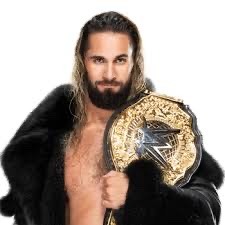
#wwe#the shield#roman reigns#dean ambrose#seth rollins#wrestlinghistory#wwe superstars#jon moxley#wwe raw#wwe smackdown#wwe nxt#the tribal chief
11 notes
·
View notes
Text
tuesday again 10/3/2023
september was not kind but we're back with a real making section babEY and lengthy all other sections
listening
SHIFTED by Jolynn J Chin, a progressive jazz (?) piano piece that changes time signatures on every bar. i am led to understand this is a massive technical achievement but more importantly to me it sounds cool as hell. this is a little funny bc pianist friends occasionally complain that the technically challenging pieces that are fun to play aren't that fun to actually listen to. spotify
youtube
the artist uploaded an explainer video that went well over my head but i have no music theory background. i know that not every video with a lady patiently talking through a problem on a whiteboard is going to be a physics video but spiritually this is a physics video to me
youtube
how'd i find this: spotify discover weekly
-
reading
lee winter's The Fixer. perfectly fine technical quality of writing but absolutely bizarre plot. there will be spoilers for this book bc i cannot talk about this book without them.
A naive activist is hired by a corporate villain but doesn’t realize it. Cue one awkward farce, a twisty puzzle, and the slowest of slow burns in this opposites-attract, ice queen romance. Nine years ago, aloof, icy Michelle Hastings chose career over love. She’s now living with that choice as she rules a secret corporation catering to the rich and powerful. Enter Eden Lawless. The guileless activist finds it a bit weird being employed by a mystery organization to bring down a corrupt mayor. But, hey, she’s up for a challenge. Much harder is getting her beautiful new boss out of her head. The pull between them is electric.
this was not the fanfic level of mean woman i prefer. this woman is a bit of a tsundere boss with some past regrets. like yeah her Company does awful shit but she herself is a very restrained sort of James Bond villain level of icy polite.
unfortunately the actual plot itself is so fucking bizarre.
one of my two concerns: the author is not Jewish but has written Michelle as such, and employed sensitivity readers. i do not know that it is in the very best of taste to have a Jewish woman as the head of a shadowy, textually evil, para-governmental organization pulling strings behind the scenes for the rich and powerful.
the other thing that really threw me is that the series of events we are concerned with, a mayoral election in small-town uhhhh maryland??? i have returned the book and cannot fact check-- seems to be a very thinly veiled rehashing of the 2016 presidential primaries. but as a mayoral campaign.
there is an obnoxious redheaded used car salesman who is running for national publicity for his used car business and writes nasty jingles about his main opponent, a very unpleasant woman who nevertheless gets things done but WAS a slumlord and DID ruin our activist Eden's life. everyone in the county is in her pocket. things are running quietly and well in town, and her platform is solar. the solar farms would take up literally all the actual farmland in the country and (spoiler) she is defeated bc the townspeople think this would be an eyesore and not actually bring that many jobs to the town. again, i stress this is a small town mayoral campaign. they are a college town but it is an EXTREMELY small lib arts college. she has the correct idea about renewables but downfall is that she personally is reprehensible and is going about renewables WRONG!!!
our main character Eden sinks this renewable energy plan bc, again, in college, legally-not-Hillary-Clinton got her dad fired from the local hospital and ran them out of town bc of Eden's protests against her slumlord activities.
then there is the objectively best candidate, a retired pediatrician in the very early stages of dementia who is sort of a puppet candidate for his wife, the actual political mind who hired the evil CEO Michelle's company through a shell company in order to sink her husband's opponent. VERY weird setup.
this was indirectly recced by a big name romance writer who would would not appreciate being tagged lol. i will not be reading the second half of this duology. too much stuff that made me go WHUH???
-
watching

The Big O is a 1999 and then 2003 detective noir mecha anime. i have never wondered what batman: the animated series would look like if it went in a different retrofuturist direction and put bruce wayne in mecha, but now i have that answer.

this show looks good as fuckin hell. there are SO many dutch angles and dials and gadgets and switches. there's a cut in the first episode that doesn't translate well to screenshots, to the interior of a luxury apartment building and the water in the pool is sloshing around as mechs fight outside.
ive only seen the first three episodes but im having a marvelous fucking time. very importantly for me, there is a robot who is a child but notorious womanizer Bruce Wayne Roger Smith isn't fuckin weird about it.
how i found it: this post reblogged by @ouroborosenso ! the line "You're a louse, Roger Smith." got one short sharp bark of laughter out of me, and a bone dry sense of humor is an excellent selling point. it's available on the internet archive (dubbed but no subtitles)
-
playing
im having a grand old time with g/enshin's new area. my shit did kind of get rocked with the revelation that the prisoners-- okay let's back up. the player character gets sent to prison on false charges so they can investigate something for the chief justice. backing up farther, the watery land of Fontaine runs on magic energy produced during its court trials. this incentivizes them to make the court trials full-on fucking dramatic productions with very little care for like. victims. once convicted (fontaine feels like it has a near 100% conviction rate, very much like japan) prisoners go to an underwater prison that is a more steampunk version of bioshock. these prisoners make the automated clockwork humanoid police force, as well as the automated clockwork police dogs. there is a panopticon.

the economy in the prison (cannot believe this game that wants me to spend money on anime waifus so i can watch their skirts billow teasingly in the wind while i fight big monsters also wants me to think about prison economies) anyway the economy in the prison is scrip-based. you get one free meal a day but everything else runs on scrip. apparently many people choose to stay in prison after their terms are up bc they have achieved some sort of power and stability there. says a lot about the surface world, don't it? wish we SAW literally any of that in the surface world!

i guess being very overt about drawing from a fifteen year old game is like. kosher? so many other games have drawn from bioshock, but genshin draws so heavily and frequently from Breath of the Wild that it was a little jarring to go from the last area with the cute little korok seed knockoffs and a lot of thinking about academic misconduct to somewhere with a flavor of politics i think a lot more about. as you travel throughout the land of genshin impact, you are quite involved in big diplomatic incidents and overthrowing various baddies, installing the correct people, things of this nature. i think this new land of Fontaine is the most overtly political in that literally all of your time here is spent thinking about exactly how this country's administration operates. it's not a real "hey look we've recreated the Torture Nexus" situation yet but i am curious about what sort of themes the next expansion will be chewing on. im also not quite done with the second of two giant quests that take place in the prison so stay tuned.
bonkers fucking game. wish it wasn't gambling based and didn't have to adhere so closely to chinese restrictions. wish literally ANY outlet was regularly covering this insane lore hiding under the gacha and grind systems
-
making
the goddamn couch covers are finally done. they are 9x12 and 12x16 100% cotton drop cloths from Chicago Art Supply, and im quite happy with their quality (evenness of weave, normal selvededge, normal seams). i used rit all purpose dye in fuchsia (hot bucket method with colorstay, more on that later) and the itajime triangle method of shibori dyeing. this involved folding the fabric accordion-wise, folding it like a flag, then sandwiching it between two triangles of wood or plastic with many many many rubber bands or twine.
it was a right fucking bitch to prewash, dry, and fold these fuckers. mack was deeply unhelpful. if i need to wash them in future i will be visiting a laundromat.


i could not procure enough dye locally for the recommended 1 packet per 1 lb of dry fabric (4 and 8 pounds respectively) so i did a .75 strength dye bath, since i wasn’t trying to dye the entire thing perfectly and evenly. i think you could probably do a half or quarter strength with more time and be fine. the photo on the left is the smaller dropcloth after a half hour in the bucket (unfolded in the washer to reduce. well to just reduce many problems) , and i did not like that high of a contrast bc i did want some color on all the fabric. so i unfolded and dunked the whole thing back in for literally thirty seconds and it promptly sucked up the rest of the available dye molecules, making it lower contrast than i wanted. so it goes.


i didn’t like how even and neat the triangle motif was on this go round (when deciding on colors and patterns for this project i was thinking about coral and pink cow print but did not want a literal pink cow print couch), so for the next one i did a much worse job folding and was way more aggressive with the rubber bands. i also folded it in half lengthwise to make the accordion folds easier for myself, something i did not do for the smaller one.


and here she is through my balcony screen door after an hour in the dye bucket and a wash with half the recommended amount of fixative to get it to bleed a Little for better coverage of the fabric but keep it lower contrast. i am not completely thrilled with how this came out bc i feel it reads a little sorority girl tshirt. im not sure if making the motif/triangles smaller would have helped any, and even though i was not folding it in half every time you can only fold something so many times before it becomes extremely cumbersome.

couch before the cushion, the cover loosely on the couch. i am going to safety pin and tuck the shit out of this but do not currently have the bandwidth to actually sew it. we’ll see how this goes! kind of a pain in the ass and physically taxing but not a lot of actual hands on time, and now the dyeing bug is out of my system.


preview of next project: i am going to repaint this somewhat shabby globe bar with northern hemisphere constellations :)

36 notes
·
View notes
Text


The New Zealand Problem
Sometimes you can see the issue that will light the gymternet on fire a mile away before anyone has even seen the smoke. And sometimes that fire had always existed.
In gymnastics one of the paths to qualification at the Olympics goes to the single highest all around placement at each continental championship from a country that did not qualify a team already. This is fairly straight forward in most places but gets dicey in one corner of the world. The Oceania Gymnastics Union is essentially a continental federation of 2 countries. Yes there are other members (Guam, Tonga, Fiji, Cook Islands, and America Samoa), but there are no elite gymnasts from those countries. Australia qualified a women's team to the Olympics, so by default that means a Kiwi WAG gets an Olympic spot. At least according to FIG. But they aren't the only ones who get to decide who is an Olympian.
I've talked about "No Olympic Tourist" Policies before, and people may have run into them in regard to Sweden and ice skating, but many small to medium sized countries have policies to limit the size of their own Olympic teams for budget reasons. These national Olympic committees (NOC) set criteria that are higher than the general qualification rules for a given sport. Sweden's is often considered the most extreme (you have to show you are in the top eight in the world, meaning you can make an Olympic final and contend for a medal. The reason they're called No Olympic Tourist Policies is because you wont be sent to the Olympics just to be there.
New Zealand has had a No Olympic Tourist Policy for decades, and while their criteria is less extreme then Sweden's it works similarly. You have to convince the NZOC that you are within the top 16 in the world (the ability to make a semifinal in athletics or swimming where races are 8 lanes wide). In 2012 Jordan Rae was one of the last gymnasts to qualify at the London Test Event, but NZOC turned down her spot and it passed on to Đỗ Thị Ngân Thương of Vietnam who finished behind her and who went on to compete in London.
In this interview from 2016, Rhythmic gymnast Tanya Moss-Barry who represented New Zealand in Los Angeles describes how initially they believed that New Zealand would send no gymnasts to the Olympics that year. Only a top 8 finish at an event in Tokyo convinced the NZOC to send her, and she believes it was at the expense of equally deserving WAG and MAG gymnasts. They would send only one of them.
It appears that Courtney McGregor was sent to Rio on the basis of her vaulting competitiveness. Which itself suggests that the people making the decisions at the NZOC don't really know much about gymnastics. McGregor came in 4th on vault at the Rio test event and 17th at 2015 Worlds. But as anyone who knows gymnastics knows... vault fields are much smaller than other apparatus and a finish in the teens doesn't mean you are as competitive as one on the other apparatus. But more power to them if they were able to get the Olympic committee to send her on that basis.
So the problem for 2024.
The WAG Olympic Qualification road has handed an Olympic spot to New Zealand by default. There are no other elite gymnasts in the region it can go to and no mechanism for that spot to be reallocated to anyone outside of Oceania. And based on the results from Worlds it is highly doubtful that the NZOC will consider either Madeleine Marshall (93rd in the AA and 110th on beam) or Reece Cobb (102nd in the AA and 56th on beam) to be competitive. Courtney McGregor is making a comeback but without competing elite in years I'm not sure how she makes that case either.
Georgia-Rose Brown recently changed countries from Australia to New Zealand but she almost certainly is banking on making an argument for her competitiveness based on her bars results (she came in 4th and 5th on bars at two World Cups in 2023). Maybe the people making a choice at NZOC wont know that 2023 World Cups aren't evidence of competitiveness. Her best bars result of the entire quad would have put her in 22nd on bars at 2023 Worlds. If she qualifies here is to hoping she can make a case. But it does raise the question of if she knew about the NZOC policy before changing countries or if she saw the automatic NZ WAG qualification spot as an opportunity and didn't realize there was an extra step. I have to believe she went into it knowing though. The NZOC is pretty well known in Kiwi circles.
So what happens to this spot if it goes to a Kiwi and the NZOC turns it down? Well... that's not clear. It could go unfilled. Or FIG could ask the IOC permission to let them revert it to the Worlds AA results as Australia's team means that Oceania already had representation.
Or some smart cookie NCAA gymnast with ties to Guam or Fiji could make a country change REAL soon and find themselves at the Olympics with a relatively easy path.
21 notes
·
View notes
Text
‘I want to do something significant’: ex-F1 champion Nico Rosberg on his sustainable entrepreneurship
originally published by Joanna Partridge for The Guardian 13 June 2023 (x)
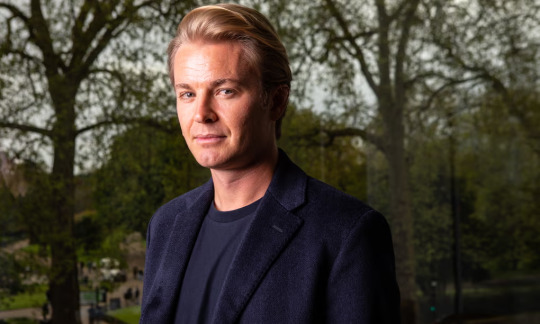
The former elite driver has changed lanes from fossil-fuel-guzzling track cars to green investing and environmentally friendly racing.
In a parallel world, former Formula One world champion Nico Rosberg could be sitting at home in Monaco with his feet up, having set himself up for life, all before the tender age of 32.
After clinching the world championship in 2016, beating his rival Lewis Hamilton in the process, Rosberg shocked the world of motor sport by promptly quitting the pursuit that had been his life since starting competitive racing at the age of six.
Like many sports stars who retire relatively early, he has moved into punditry, commentating for Sky, but unusually he also appears to have effortlessly switched lanes from professional sportsman to entrepreneur, investor and philanthropist.
Sipping sparkling water in a hotel overlooking Hyde Park, the German-Finnish former champion has “got used” to talking about his retirement, despite being just 37. “I am so incredibly lucky,” he admits. “Thanks to the racing, I have financial freedom and I can do whatever I want.”
Despite sporting a tan, relaxed expression and understated navy clothing, Rosberg reveals a glimpse of a sportsman’s inner drive when he explains his motivation: “I want to do something significant, I want to contribute and I want to grow.
“I was always inspired by people who took that entrepreneurial path, investing to support or create something.” He rules out a return to racing, stressing he wants to use “the legacy of that, for my new endeavours”.
Rosberg now employs 15 people to work on his business and investment affairs, and his new endeavours include brand ambassador roles for German energy company EnBW – where he is the face of its electric charging network – and logistics provider Jungheinrich, but he describes himself on professional networking site LinkedIn as a “sustainability entrepreneur and angel investor”.
Rosberg has previously spoken about how he only gained a broader perspective on life after stepping off the international Formula One merry-go-round. Perhaps surprisingly, given his background in a fossil-fuel-guzzling sport, Rosberg now speaks with the zeal of a convert about sustainability and the importance of drawing attention to the climate crisis, something he admits he gave little thought to during his racing career.
This passion led him to found the Greentech festival, along with engineers and entrepreneurs Marco Voigt and Sven Krüger, in 2019. This year’s conference starts on Wednesday in Berlin, and the event is described by the organisers as a “global platform for pioneering and sustainable ideas”.
Rosberg says his wealth has afforded him the luxury to focus on these new interests, including investing in sustainability-focused startups, while also creating an endowment for his “grandchildren” (he and his wife’s two children are seven and five).
Indeed, one reason for this trip to London was a meeting with charitable foundation the Wellcome Trust, one of the UK’s largest philanthropic investors, known for its track record of impressive financial returns.
Forbes puts Rosberg’s net worth at just over $20m (£16m), although this seems a conservative estimate, given the earning power of the world’s elite racing drivers. He admits to having “software” that provides him with an exact figure, but will not be drawn on what that is, other than adding: “The top F1 driver earns $40m a year.”
Another of his ventures presumably comes with the need for deep pockets: He owns Rosberg X Racing, a team in the new environmentally conscious motor sport Extreme E. Now in its third season, the series sees electric off-road SUVs race in different locations around the globe that have been affected by the climate crisis.
The teams, each comprising a male and a female driver, are racing this season across five locations, from Saudi Arabia to Scotland, and Italy to the Americas. In an effort to limit their environmental impact, the series’ vehicles, logistics equipment and infrastructure are shipped, rather than flown, around the world aboard the St Helena, a former Royal Mail ship. The races are televised, but take place without spectators.
Rosberg’s team, now third in the standings, is sponsored by IG Prime, a division of financial brokerage IG, among others, and is considered an evolution of Team Rosberg, the motor sport outfit founded in the 1990s by his father, Keke. Other Extreme E team founders include Hamilton and former British Formula One driver Jenson Button.
The series claimed a global audience of 135 million in 2022, more than 30% up on viewership during its inaugural season. However, this pales into insignificance compared with Formula One, riding high and growing its fanbase, especially in the US.
Rosberg hopes Extreme E entertains viewers, while getting them to “do their part, and contribute, and think about their own lives” amid the climate crisis.
Rosberg says his own car is an all-electric Audi e-tron, extolling the virtues of the charging network in mainland Europe – and says he does not “like it any more” if he is collected by a fossil fuel-powered car when travelling abroad. He also says he takes the train in Germany, but skirts over whether he flies by private jet.
His focus on sustainability extends to his investment portfolio, which does not contain any oil, tobacco or defence companies. However, he is at something of a loss to explain the involvement in Extreme E of Saudi Arabia, which hosted the first race of the season, but is also the world’s biggest producer of fossil fuels, and home to the world’s biggest oil company, Saudi Aramco, which is 95% government-owned. “I would understand that there are some people, where it doesn’t sit too well with them,” Rosberg says. “All our partners in Extreme E are allowing us to do a lot of good, which we are very grateful for.
“Sometimes you need to go out there a little bit to do a lot of good.”
After the regimented existence of his early years, where his job determined his timetable, Rosberg clearly relishes being his own boss. He vociferously rules out a future return to Formula One, whether as a driver or running a team: “Never, ever, ever, because I value my freedom,” he says. “It was very intense.”
Rosberg still watches all the Formula One races but confesses the experience is not relaxing: “When the lights go off, I imagine I’m there.”
Few would imagine that investing could produce the same high, but he insists he has other ways to get his adrenaline fix: “In business, and on the tennis court.”
CV
Age: 37
Family: Married, with two young children
Education: International School of Monaco
Pay: Undisclosed. “My income comes from representing brands, I am the face of the biggest electric [vehicle] charging infrastructure in Germany from EnBW, and Jungheinrich, the logistics mobility provider. That is one important source of income for me.” He says his income comes from representing brands, his investments in startups yet to deliver significant returns.
Last holiday: Ibiza, where his family has a holiday home and owns an ice-cream parlour. “It’s our favourite place to go.”
Best advice he’s been given: “My father said: ‘You always meet twice in life.’”
Biggest career mistake: “Investing into a great idea, but where the founders were not 100% convincing.”
Word he overuses: “Big bang,” according to his assistant Lena. He adds: “We talk about building reputation … I like to think in ‘big bang’ stories, such as winning the Extreme E championship.”
How he relaxes: Playing tennis; “I am average good.”
33 notes
·
View notes
Text
Redesign, Rebuild, Reclaim

PART 1
Seth Rollins and Kynlee Lockwood were on top of the world circa 2015, champions, the faces of the company. The world heavyweight champion and the divas champion were untouchable with The Authority in their corner, until Seth’s knee gave out. Kynlee made her leave from the company during this time, no longer feeling she got the respect she deserves but what happens when Seth returns to fight Hunter and the odds need to be evened?
(some events in this will not be timeline accurate)
Being a part of The Authority was never easy so after Seth tore his right ACL, MCL and medical meniscus lets just say things were never the same. Kynlee valued the time she had previously spent by the World Heavyweight Champion’s side, dominating the men's and women's respective divisions so when he was no longer around the champ had lost motivation... she was being scheduled in matches against the likes of Eva Marie and Alicia Fox most of them not lasting longer then 5 minutes, this ultimately left her to take an indefinite leave of absence from the company.
------------------------------------------------------------
MONDAY NIGHT RAW - February 15th 2016
(103 days since Seth’s injury)
Walking down to the ring to the beat of her entrance theme accompanied by an overwhelming light display with the Diva’s title clasped around her waist, a microphone in her hand and a void expression on her face Kynlee only had one thing on her mind... Change.
“Cut my music!”
Whispers and low mumbles of confusion emit from the crowd, normally if the Divas champ was in the ring The Authority would be hot on her heels so to say this was unusual is an understatement.
“I know a lot of you will be confused as to why I'm here and normally I would be standing here boasting about my position with this title belt around my waist but tonight's different. You see for the last couple of months things haven't been right, I no longer feel valued in this company for the talent I hold and the revenue I bring to this business so it is in my best interest to cut my losses and leave before I can be buried like many other women in this roster and the wrestling world. We are not valued for the amount of work we put in to this job because most of us don't get more than five minutes of air time.”
“I was naïve enough to believe in joining The Authority I would be able to showcase my talent and help others on the roster during our matches together, but it took my best friend’s knee caving in to realise even though I'm at the highest point I can be in my career things don't always improve they can get worse. Seth... just know that me leaving isn't me abandoning you, when you return you will continue to defy odds and win back the title you never lost and I will be there cheering you on every step of the way, you will continue your story but unfortunately for me... mine ends here.”
“I lay down my title in hope that one day the women's division is respected and valued just as much as the men’s because we deserve it, The WWE has a platform to showcase the talent of women and changes need to be made for the benefit of the amazing ladies behind that curtain and the business”
Dropping the mic to the floor and placing the pink and silver butterfly belt in the middle of the ring, Kynlee begins her ascend back up the ramp, never once turning back but her strong façade falters for the first time that night.
----
EXTREME RULES 2016 - Newark, New Jersey
Its been three months since the departure of Kynlee Lockwood and change has definitely been made since then. The Authority had disbanded in April. The Diva’s title has since been retired and a triple-threat match had been held at WrestleMania 32 to crown Charlotte as the inaugural WWE Women’s Champion. Roman Reigns had defeated Triple H to win the WWE World Heavyweight Championship.
One thing hadn't changed and that was the return of Seth Rollins.
Seth’s POV
“Hey, how are you?”
The sweet southern twang travelled through my private trailer as Kynlee stepped through the door.
“I’m good, just got cleared for tonight still got some swelling but nothing on the joint so. Mentally I'm still preparing I mean there's only the cage match, the women’s and then main event”
Kynlee’s hand reached out to hold mine and I felt at ease with the subtle touch, she brought me a kind of comfort that cannot be found anywhere else but with her, within her arms and under the soft gaze of her eyes. I didn't know the extent of this warm feeling that had protected me in the months of my rehab. Could it be love? True unconditional love? I had no doubt that without her I wouldn't have the opportunity to return to my passion as quick as I did, she was my motivation.
Kynlee’s POV
“Why don’t you come back with me, We could do it all again I mean no one’s done it as good as we did, as good as you.”
Staring into his deep brown eyes I could tell he wanted it, he was pleading for it. I wanted it too. I really did but not yet.
Seth and I had grown closer during his rehab process, closer then friends but that was a secret always hidden behind doors (mainly gym and hospital ones), to admit I'm scared is an understatement, I'm scared about what if Seth’s not ready? what if I go back but Seth gets injured? what if Seth excels like I know he will but I'm forgotten because I left?
“Seth I'm not sure. I mean you left because you had to you had to take care of your physical health and preserve you mental health. I left because I got upset. I left for a selfish reason. I was an embarrassment to the company when I left they wouldn't want me back”
Tears well up in my eyes as I feel a rough hand brush against my cheek the soft aroma of Seth’s cologne welcomes me into a sense of tranquillity. It was the subtle things that help ground me and Seth knew that, a look of reassurance, the linking of our hands or the warmth of him embrace.
Turning to the monitor on the wall it shows Charlotte and Natalya in the heat of their match both desperately scrambling to lock in submissions to pick up the win.
“You see that title, the title those two talented women are putting a hell of a show on for? You made that change, it was your speech and dedication that got the word Diva banned and that stupid butterfly belt retired. You gave the women their power back, so why not go claim yours? Baby go show that roster who does it best who's got the longest historic reign for a women's belt.”
----
EXTREME RULES - MAIN EVENT
“OMG ITS- ITS SETH ROLLINS!”
“ITS SETH ROLLINS, A PEDIGREE!”
“SETH ROLLINS IS BACK!, SETH ROLLINS IS HERE A PEDIGREE TO THE CHAMPION”
“Seth Rollins a former WWE World Heavyweight Champion, and remember he never lost the title he was forced to vacate it due to injury last year”
As the show closes the last scene is Seth Rollins with the WWE World Heavyweight Championship in his grasp with his former shield brother Roman Reigns at his feet.
After returning backstage and receiving a large amount of praise and complements Seth could only think of one thing and that was the women he had grown to love who sat waiting proudly in his trailer, he showed the world he could come back and concur and that's what he going to help her do.
She had Redesigned the women’s image in the WWE ,
helped Rebuild a broken Seth Rollins,
and now she needs to Reclaim her title and division.
#seth rollins x reader#wwe x reader#seth rollins fanfic#seth rollins imagine#wwe imagine#seth rollins x oc
60 notes
·
View notes
Text
The Astrology of : Donald J. Trump
Arguably the most hated man in America, Donald Trump was born on June 14th, 1946 in Queens, New York. He got his start by working for his Father—Fred Trump—and later, inherited some money from the Family business. Over time, he was seen as a wealthy public figure, even making cameos in Movies and dabbling in TV shows, the most notable one being his starring role on The Celebrity Apprentice. Trump infamously began his Presidential Campaign in 2015 and won the 2016 Election—which is when he became Public Enemy #1.
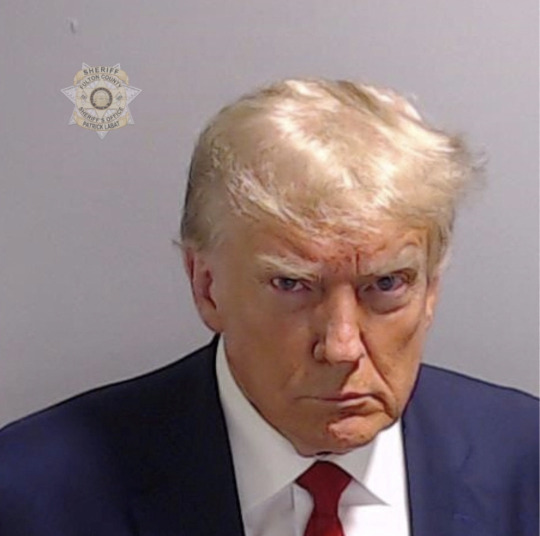
Surprisingly, I found a picture of his birth certificate online, so we finally have a definite chart.

🦁Trump is a Leo Rising 29°, which makes the Sun his Chart Ruler. Leo Risings are known to express themselves in a “big” way. This can also explain the amount of pride he has. The rising sign can also show us what we look like physically, so I think its funny that he’s known for having Orange skin and Blonde hair, as it kind of resembles a Lion—and Lions are the symbols for Leo.
☀️Chart Ruler in the 10H : The Sun is what we are interested in and what we like to revolve our personalities around, and the 10H is our achievements and career milestones. He likes to take pride in everything he’s done and accomplished.
💵Midheaven in Taurus : The Midheaven is the highest point in our charts, and it represents what role we play on a public scale, so what sign its under shows us the characteristics we’ll have publicly. Taurus is the sign/energy of values, wealth, sensual pleasures, and physical rewards. Trump is known for what he has and how wealthy he is.
🤬MC square Mars : Mars is the action, defense, and anger we have; it can show our competitive side. So, when it squares the Midheaven, we see somebody who is overly competitive. In both 2016 and 2020 elections, he would call other candidates nicknames : Sleepy Joe, Little Marco, Crooked Hillary, etc. I also think this adds to his bad reputation in the public.
👊Mars in 12H conjunct the ASC : The afflicted Mars conjuncts his Ascendant, so he expresses himself with a lot of passion; something about his energy is too competitive, which adds to the overall public dislike.
☄️Sun sextile Mars : This placement indicates pure confidence and charisma.
Pluto in the 12H : The 12H is what separates us from the collective, so I think powerful 12H placements could indicate royalty or extreme fame.
😶🌫️Neptune in the 2nd house : Neptune can indicate delusions, creativity, physical detachment, etc. The 2nd House is what we equip ourselves with and what we value (so it mainly rules money). Obviously, Trump likes to brag about his riches, yet the Trump Organization was fined $1.6 Billion for criminal tax fraud.
👨⚖️Saturn sextile MC : Saturn cuts out what is unnecessary and also indicates where we have responsibility, so you can expect people to be laser-focused on their goals. His MC is supported by Saturn, so in the public he has a somewhat serious role (being the President). Especially since Saturns sits in the 11th, we have someone who can offer something serious to society. This aspect is generally good for anybody who wants to be a public official.
📈📉Uranus in the 10H : Uranus represents sudden changes, shocking events, and “breakthroughs”, if you will. An individual with this placements will go through many ups and downs in his career, and we can see this with Trump : to becoming president, to being impeached, and to becoming the first president to be indicted.
#astro observations#astrology#donald trump#trump mugshot#celebrity birth chart#astro community#astro placements#astrology observations#astro notes#zodiac#zodiac side of tumblr#birth chart#natal chart#zodic signs#gemini
40 notes
·
View notes
Text
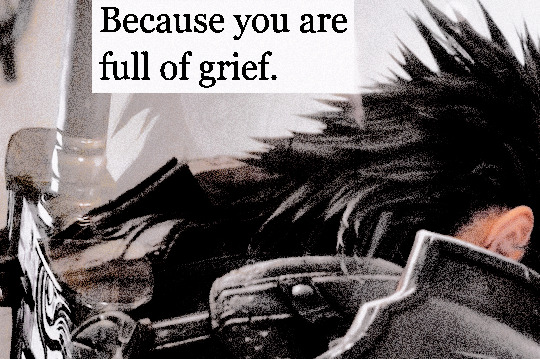
#YOUMOURN, private zack fair from - crisis core - final fantasy. orig. made 2016. re - re - est. 2024. reimagined from canon. please read about his rewritten canon because it is crucial how different i portray him from the original source. crisis core critical. not affiliated with the ffrpc. rewritten by cassi. 25+. any pronouns. extremely low activity and primarily iconless. standard rules apply. has played through rebirth. spoilers will be tagged. verses include bloodborne, dark souls, ffxiv / xv / xvi, kingdom hearts, devil may cry, baldur's gate 3, resident evil. carrd tba later.

information about canon divergence below (does not follow rebirths timeline but does take some influences)
does not only include staying alive endgame (his price to pay is losing his left eye which is covered by an eyepatch) but upon finding out the truth about shinra and soldier as a whole skews his vision on what he thinks is wrong and right. absolutely does not follow soldier honor nor blindly follows in his mentors ideals, instead perceives his own opinions and changed directions of dreams. tries to cling onto naïve ideas of heroism he has embodied but loses it along the way. has come to the realization that soldier is nothing but monsters thus believing he is one in return despite no longer being a member. partakes in the bombing of reactor's 1 and 5 - albeit super reluctantly so despite his past dealing with them - thus following the events as an unwilling body of avalanche. there is fleeting proof of sephiroth that he absolutely can't ignore ie. a whisp of long silver hair, an echo of his voice that no one else can hear, but it's never in the full form like cloud.
horror elements will also be applied here so follow with caution.
#pinned.#credits: psd by yellowhelper.#(i write i promise)#zack is a passion project for me because i Do Not like the narrative written for him ur free to not like the direction im taking him#if u must block me no hard feelings here so that way i know ur not interested.
2 notes
·
View notes
Text
Zack Beauchamp at Vox:
I met Sen. J.D. Vance (R-OH), Donald Trump’s new choice for vice president, in the summer of 2022. I was covering a conservative conference in Israel, and Vance was the surprise VIP attraction. We chatted for a bit about the connections between right-wing movements across the world, and what American conservatives could learn from foreign peers. He was friendly, thoughtful, and smart — much smarter than the average politician I’ve interviewed. Yet his worldview is fundamentally incompatible with the basic principles of American democracy.
Vance has said that, had he been vice president in 2020, he would have carried out Trump’s scheme for the vice president to overturn the election results. He has fundraised for January 6 rioters. He once called on the Justice Department to open a criminal investigation into a Washington Post columnist who penned a critical piece about Trump. After last week’s assassination attempt on Trump, he attempted to whitewash his radicalism by blaming the shooting on Democrats’ rhetoric about democracy without an iota of evidence. This worldview translates into a very aggressive agenda for a second Trump presidency. In a podcast interview, Vance said that Trump should “fire every single mid-level bureaucrat” in the US government and “replace them with our people.” If the courts attempt to stop this, Vance says, Trump should simply ignore the law. “You stand before the country, like Andrew Jackson did, and say the chief justice has made his ruling, now let him enforce it,” he declares.
The President Jackson quote is likely apocryphal, but the history is real. Vance is referring to an 1832 case, Worcester v. Georgia, in which the Supreme Court ruled that the US government needed to respect Native legal rights to land ownership. Jackson ignored the ruling, and continued a policy of allowing whites to take what belonged to Natives. The end result was the ethnic cleansing of about 60,000 Natives — an event we now call the Trail of Tears. For most Americans, this history is a deep source of shame: an authoritarian president trampling on the rule of law to commit atrocities. For Vance, it is a well of inspiration. J.D. Vance is a man who believes that the current government is so corrupt that radical, even authoritarian steps, are justified in response. He sees himself as the avatar of America’s virtuous people, whose political enemies are interlopers scarcely worthy of respect. He is a man of the law who believes the president is above it.
[...] The Vance of Hillbilly Elegy was very different politically. Back then, he took a conventional conservative line on poverty, describing the working class as beset by a cultural pathology encouraged by federal handouts and the welfare state. 2016 Vance was also an ardent Trump foe. He wrote a New York Times op-ed titled “Mr. Trump Is Unfit For Our Nation’s Highest Office,” and wrote a text to his law school roommate warning that Trump might be “America’s Hitler.” Eight years later, Vance has metamorphosed into something else entirely. Today, he pitches himself as an economic populist and cosponsors legislation with Sen. Elizabeth Warren curtailing pay for failed bankers. In an even more extreme shift, he has morphed into one of Trump’s leading champions in the Senate — backing the former president to the hilt and even, at times, outpacing him in anti-democratic fervor.
[...] And it is clear that Vance is deeply ensconced in the GOP’s growing “national conservative” faction, which pairs an inconsistent economic populism with an authoritarian commitment to crushing liberals in the culture war. Vance has cited Curtis Yarvin, a Silicon Valley monarchist blogger, as the source of his ideas about firing bureaucrats and defying the Supreme Court. His Senate campaign was funded by Vance’s former employer, Peter Thiel, a billionaire who once wrote that “I no longer believe that freedom and democracy are compatible.” He’s a big fan of Patrick Deneen, a Notre Dame professor who recently wrote a book calling for “regime change” in America. Vance spoke at an event for Deneen’s book in Washington, describing himself as a member of the “postliberal right” who sees his job in Congress as taking an “explicitly anti-regime” stance.
Vance is also an open admirer of Hungarian Prime Minister Viktor Orbán, a right-wing politician who has systematically torn his country’s democracy apart. Vance praised Orbán’s approach to higher education in particular, saying he “made some smart decisions there that we could learn from in the United States.” The policies in question involve using national dollars to impose state controls over universities, turning them into vehicles for disseminating the government line.
Donald Trump's pick of J.D. Vance to be his ticketmate is about doubling down on MAGA authoritarianism and the "postliberal" worldview.
See Also:
The Dean's Report: JD Vance is worse and more dangerous than you know
The Guardian: JD Vance once worried Trump was ‘America’s Hitler’. Now his own authoritarian leanings come into view
#J.D. Vance#Donald Trump#2024 Presidential Election#Authoritarianism#Hillbilly Elegy#2024 Trump Assassination Attempt#Robert Kagan#Schedule F#Election Denialism#Curtis Yarvin#Peter Thiel#Patrick Deneen#Viktor Orbán#Postliberal
55 notes
·
View notes
Text
A Deranged Dingus Discusses The De-Balloting of Donald

Charlie's expression here is how I react to pretty much everything that comes out of his mouth. (Photo Credit: Turning Point USA/The Charlie Kirk Show)
Well, I figured we'd take a look at the American Rights commentary on the Colorado Supreme Court's ruling that Trump was ineligible to appear on ballots in the state of Colorado, and who better to represent the right than the guy who's organization this blogs name takes a jab at?
So, Charlie Kirk posted a thirty minute video on YouTube about this event and his analysis on what happened....it's not great.
00:54, Charlie Kirk: "The Colorado Supreme Court yesterday ruled Donald Trump not allowed on the ballot. The left is constantly warning us about fascism, dictatorship, and civil war, and talk about rrrrr-democracy (sic). Now remember, every time you hear democracy what's the word you replace it with? Oligarchy."
It's unlikely that this decision is even going to get past the Supreme Court, plus the court is staying their ruling until January 4th which is the day before names go on ballots in Colorado. With that being said, the Democrats had no part in the initial suit that led up to this.
The suit was commissioned by nine voters from Colorado who alleged that Donald Trump was illegible to take office due to his role in the execution of the January 6th insurrection attempt. All of these voters were eligible to vote in the GOP primary which means that according to Colorado State Law they aren't registered Democrats, the left had absolutely nothing to do with this.
And like I said before, it's extremely likely that the Supreme Court will overturn this.
Now, about this oligarchy nonsense. Even in the unlikely event that this goes through, voters in the state of Colorado still have the right to vote for another GOP candidate in the primaries (for example, Ron Desantis). The Democrats still have the ability to lose the election even if Trump isn't allowed on primary ballot in Colorado.
Trump can also run in all 49 other states. Colorado isn't particularly important to his campaign because, as Charlie points out, it's a left leaning state. Trump lost it in 2016 and still won. It's extremely unlikely that other states have enough time to do what Colorado did.
01:20, Charlie Kirk: "They don't mean representative government, they don't mean election, they don't mean power to the people. They mean people in closed rooms who get to decide your future."
So if you couldn't already tell, Charlie isn't really taking this all particularly well.
He is inflating this issue to a way larger thing than it is and completely ignoring the fact that the United States Supreme Court is very likely to overturn this. Not to mention the fact that Colorado is an extremely unimportant state for Donald Trump's campaign, he is extremely likely to win the GOP nomination and the election even without Colorado.
01:32, Charlie Kirk: "They do not want representative government, they want a philosopher king, a ruling class."
Charlie is misusing the term philosopher king here. The term philosopher king was coined by Plato to describe a ruler who governs in a way that applies philosophy. I'm convinced he just threw that term in there to sound smarter.
01:52, Charlie Kirk: "Now I have to take a detour here. Colorado is without a doubt one of the saddest political stories of the last couple decades. Colorado used to be a ruby red state."
Colorado's change into a blue state is the result of a demographic shift. The youth, mainly ones coming from California, came to Colorado and brought with them more progressive politics and viewpoints and the Democratic Party capitalized on those viewpoints.
The huge turnout for Joe Biden in Colorado is also partly because Donald Trump is so extreme that he probably turned a lot of fence-sitters and old-school Republicans off from voting for the GOP.
It also feels like Charlie is admitting that Colorado isn't all that important due to it being a blue state.
02:45, Charlie Kirk: "In some ways Colorado is worse than California. I know that sounds extreme but Colorado in some ways is more Marxist and more captured than parts of California."
Ah yes, "Marxist", the rights new favorite buzzword. The Cultural Marxism theory is nothing more than red-scare propaganda repackaged into a new shiny conspiracy.
States that are more progressive aren't communist. California for instance is the home of multiple corporations and is actually quite a capitalist hub. There is absolutely no state in America that isn't capitalist and to say differently is to ignore reality.
03:02, Charlie Kirk: "And by the way, the Christians and the conservatives have been beat into submission in Colorado."
How? Is living in a left-wing state as a conservative really that much of a battle? Charlie is acting as if the police will come to your home and harass you if you are a conservative in Colorado.
Colorado is also still a majority Christian state according to Pew Research. 64% of adults in Colorado identified as Christian and 55% identified as strongly believing in God. But I forgot, those aren't real Christians because a lot of them probably don't agree with Charlies far-right political views.
03:38, Charlie Kirk: "And by the way, what is Colorado? Colorado is the second most college educated state in the country."
This isn't the gotcha that Charlie thinks it is.
"Yeah, everybody on my side is uneducated. Get them smart people outta here!"
03:56, Charlie Kirk: "Why would Colorado have the second most college graduates of any state in the country? Lot of tech companies, beautiful place to live, and a lot of people who graduate from college get their degrees, come to Colorado, they keep their toxic ideology and they've turned Colorado into a dystopian hellscape."
This is one of the most insanely overdramatic things I have ever heard from one of these right-wing weirdos, and I've listened to a lot of Matt Walsh for this blog.
In case you are wondering, no Colorado isn't a dystopian hellscape just because it's a blue state.
4:37, Charlie Kirk: "Well Donald Trump is currently under indictment but not even under indictment for anything that would disqualify him from ballot access."
This wasn't about whether or not Trump is convicted of insurrection, it's about whether or not the court deemed him to have attempted to commit an insurrection. What section three of the 14th amendment says is as follows;
“No person shall … hold any office, civil or military, under the United States … who, having previously taken an oath … as an officer of the United States … to support the Constitution of the United States, shall have engaged in insurrection or rebellion against the same, or given aid or comfort to the enemies thereof.”
Legal experts such as the CRS (Congressional Research Service) generally agree that a conviction isn't required. Quote; "Section 3 of the Fourteenth Amendment does not expressly require a criminal conviction, and historically, one was not necessary".
In short, Charlie is lying his ass off about Trump needing to be indicted.
05:38, Charlie Kirk: "Hold on, even if Donald Trump was an insurrectionist he's allowed to run for office. Just holding office and running are two different things technically."
The operative words here are "having previously taken oath as an officer of the United States". The implication there is that the person cannot run again as if they ran and won they would be holding office.
Even Charlie knows that this isn't what the Constitution meant which is why he threw in that "technically".
05:55, Charlie Kirk: "But he's not an insurrectionist because January 6th was not an insurrection."
Yes it was. Those people violently stormed the capitol with the intent to overturn the election and were motivated to do so both by Donald Trumps repeated lies that the 2020 election was stolen and by his and others comments at the Save America Rally.
Charlie himself is complicit in what happened, bragging the day before the election that he was sending 80+ buses to the Capitol to fight for the president and then deleting the tweet when he presumably realized that it could get him into serious legal trouble. Charlie knows this was an insurrection, after all if he didn't think it was he would have left that tweet up. If it wasn't an insurrection he did nothing wrong, however if it was he is complicit in trying to overturn an election.
05:58, Charlie Kirk: "Where are the weapons? You have an unarmed insurrection?"
There were weapons at the capitol on January 6th. According to D.C police officer Daniel Hodges the D.C police had seized multiple guns from the rioters. Quote,
"I didn’t want to be the guy who starts shooting, because I knew they had guns — we had been seizing guns all day,” (Washington Post).
Whats more, photos show the rioters armed with clubs and flagpoles. Stun guns were also used. But here are some images of the rioters with weapons in case you don't believe me.
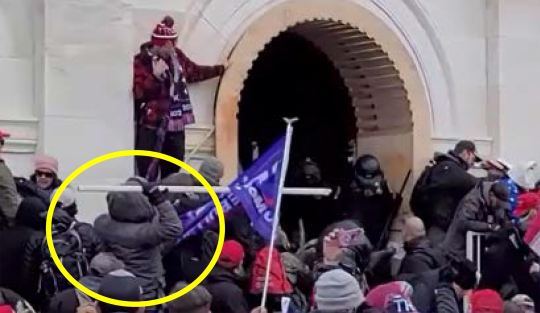

A Trump supporter holding a metal post and weapons seized by the FBI (Credit: CNN)

A Trump supporter holding a sledgehammer on January 6th (Credit: NPR)
06:02, Charlie Kirk: "Where's the meeting where Donald Trump met with the Proud Boys or the Oath Keepers?"
Ah, so he admits that it wasn't a "fedsurrection" like he claimed during his speech at AmericaFest. What is true is that Donald Trumps rhetoric spurred these people on and that they wouldn't have tried to overturn the election if Trump didn't claim that it was stolen. While the totality of Trumps actions such as claiming the election was stolen were what led up to the riot and saying that what Trump did on the day of was solely responsible for what happened plays into the hands of people like Charlie Kirk, let's take a minute and look at Trump's actions the day of;
Even before his speech on January 6th, Donald Trump tweeted out "Big protest in D.C. on January 6th. Be there, will be wild!" Many supporters of the former president said that Trump's posts on Twitter encouraged them to be there. This includes Stephen Ayers who testified quote;
"He basically put out, you know, come to the 'Stop the Steal' rally, you know, and I felt like I needed to be down here,"
Trump and Rudy Giuliani both delivered speeches that incited the crowd. During his speech, Donald Trump said quote;
"And we fight. We fight like hell And if you don’t fight like hell, you’re not going to have a country anymore.”
"Because you’ll never take back our country with weakness, you have to show strength and you have to be strong.”
Giuliani was even more overt calling for a "trial by combat".
So even if we ignore the broader picture of Trumps behavior before the day of January 6th, him and his cohorts really did incite violence at the Capitol.
06:09, Charlie Kirk: "Or, if this was an insurrection this would be the fakest, dumbest, insurrection in history."
I don't agree with it being the fakest but me and Charlie can find a little common ground in calling it the dumbest. Also, this argument makes no sense. Insurrections aren't judged by how successful or how competent they are, they're judged by if they are insurrections or not. If the insurrection were successful none of this stuff in Colorado would have happened because Trump would probably be America's new dictator!
Charlie plays a brief clip of Trump saying "peacefully and patriotically make your voices heard", which is a cherrypicked quote that ignores all the other stuff Trump said in that speech and like I said before, the totality of Trump's actions inspired the insurrection, not just the speech on January 6th.
07:03, Charlie Kirk: "It was a deep state insurrection if anything. It was the intel agencies embedding, infiltrating, and provoking activity and of course there were a handful of people who acted improperly, of course there were a handful of people that did things that they shouldn't have done inexcusably, but 99% of the people there on January 6th did nothing wrong."
Charlie knows that this the "feds did it" thing is complete bullshit, otherwise he wouldn't throw in that "99% of the people at January 6th did nothing wrong" which turns his argument into "The feds did it but even if they didn't do it, the rioters did nothing wrong when they tried to overturn the election!"
Charlie knows that if this is an insurrection, his side looks very bad and he may bear some responsibility since he provided transportation for many off the rioters, so he makes up multiple completely incongruent stories with the hope that one sticks. It's completely ridiculous.
08:19, Charlie Kirk: "We are in the middle of a slow motion civil war of the Washington D.C regime against the citizenry."
This makes zero sense. If we are in the middle of a slow motion civil war between the DC regime against the citizenry, why haven't they done more to take "truth-tellers" like Charlie Kirk and Alex Jones off of the air? Not to mention all the MAGA people in the government!
08:53, Charlie Kirk: "For our entire lifetimes the standard for controlling speech in this country has been that if you are accused of criminal speech you must incite imminent lawless action and that doesn't even include vaguely saying 'We should overthrow the government.' It means specific time place and manner."
Even by Charlie's flawed logic, this argument falls apart pretty quickly when you remember the be there will be wild tweet we mentioned earlier. In that case it would mean that the specific place and command is "Be there (the Capitol) and be wild", the place is obviously the Capitol and given the context of Donald Trump saying that the election was stolen for months before the 6th "be wild" could only mean "fight to stop the stolen election".
Also, the charges for Trump regarding the insurrection are 2 felony counts of obstructing an official proceeding, 1 felony count of conspiracy to defraud the United States, and 1 felony count of conspiracy against rights under. So while those charges involve the remarks Trump made about the election (particularly obstructing an official proceeding), they aren't necessarily speech charges.
10:23, Charlie Kirk: "The party of democracy says that you do not have a constitutional right to vote for a former president"
As said prior, the Democratic Party had nothing to do with the initial suit here. This rhetoric is turning the case into something that it isn't.
Charlie plays a clip of Rachel Maddow calling into MSNBC because she's the right's hate crush. She says and I quote (this is important because Charlie's interpretation of it is completely batshit insane);
"I mean listen, I think in the broad strokes in terms of our democracy there are very few magic wands. That said, it is not a crazy thing for a democracy to do, this is something that our own congress did in 1868 after our own civil war specifically to preclude anybody from holding office in this country who had engaged in insurrection against this country and so it's not unheard of but it would be an incredible wildcard."
So, she's essentially saying that the situation is surprising but not unheard of. To prove this, she cites the fact that the United States government did a similar thing after the civil war to preclude Confederates from running for office. It's an example and it's not referring to Trump in any way. Now, here's how Charlie reacts to it.
12:33, Charlie Kirk: "Wait hold on, this is why this all ties together. We are in the midst of a cold Civil War, we don't know it but they think it. They call us Confederates. So Rachel Maddow says 'Well, it's not a crazy thing to do if Jefferson Davis is running for the presidency'. She's basically calling Donald Trump a slave owning Confederate."
This is so ridiculous. So pointing out a historical use of this amendment is apparently calling Donald Trump a slave owning Confederate. She's not even attempting to compare Donald Trump to a Confederate.
Now you guys see what I meant in the AmFest episode when I said that Charlie has made a career out of making an embarrassment out of himself.
12:58, Charlie Kirk: "They're doing this for a variety of reasons. They wanna justify violence against you, they wanna justify if it happens, an assassination attempt against President Trump."
I can't put myself in the headspace where I would get all that out of a twenty second Rachel Maddow clip. Ironically enough, in making people this terrified of the left and making people feel as if the left is coming for them, Charlie is justifying violence against people on the left!
13:45, Charlie Kirk: "They're setting the optics and the narrative and the philosophical rationalization and justification to kill you, to raid your home, put you in prison, and take out the leader of the movement and there is not an ounce, an inch, or a sliver of an iota of an exaggeration of that."
Translation; FEAR, FEAR, FEAR, FEAR, BUY MY SHIT AND WATCH MY SHOW, FEAR, FEAR, FEAR, FEAR!!!!
Charlie is preying on his audiences emotions, especially when he knows he's probably going to get more web traffic because of this ruling, and making them afraid of something that will never happen.
14:16, Charlie Kirk: "Thankfully the Supreme Court, the United States Supreme Court is going to weight in on this."
So, let's say that Charlie is correct and the left controls DC and is waging a cold civil war against the citizens of America. How would it make sense that the Supreme Court weighing in on this is a good thing?! In this world that Charlie has constructed for his audience they will probably allow this to go through and maybe kick Trump off ballots in every state because he's the president of the people or whatever.
I do think that the Supreme Court will overturn this and judging from this so does Charlie, which makes all that stuff about how the left is waging a cold civil war against you and how they're gonna kill Trump nothing but mindless fearmongering.
14:31, Charlie Kirk: "Now one of the most revealing things about this ruling is that of the 7 justices on the (Colorado) Supreme Court, 4 of them went to elite top fourteen law schools and three of them went to the regional University of Denver Law School and that is exactly the breakdown of Tuesday's ruling."
So, I've noticed something about Charlie Kirk, and that is that he is a professional college dropout. He constantly bashes higher education and says that it produces indoctrinated leftists, completely ignoring the possibility that just maybe the reason that college produces so many leftists is because leftists tend to skew on the more intelligent side. He even wrote a book on it.
The reason I call Charlie a professional college dropout specifically is because he himself dropped out of Harper College and allegedly wasn't the greatest student. I truly believe that this part of his career stems from him lashing out due to being angry at not succeeding academically and wanting to justify that lack of success by saying that he was too much of an "enlightened conservative" to fall for the leftist tricks of higher education.
15:32, Charlie Kirk: "Arlington National Cemetery, can we have a picture of this monument guys? It's worth putting up. (for clarity, he's talking to the crew). This monument at Arlington National Cemetery is one of the great pieces of work, it's America's most noteworthy sculptors, Moses Ezekiel a Jewish man."
Considering the weird phrasing of "It's America's most notable sculptors" with sculptors said after a brief pause, I am 95% sure that Charlie was going to say "sculpture" but remembered this other kind of obscure sculpture called the Statue Of Liberty and back peddled.
What Charlie is leaving out is that this statue glorified and sanitized the Confederacy by promoting false narratives that the South was a noble lost cause. Certain elements such a slave woman holding a white officers baby make slavery out to be less brutal than it was and this was on purpose.
The creation of the statue was funded by a group called "The United Daughters Of The Confederacy" which was an organization dedicated to romanticizing Confederate veterans, so it is essentially a Confederate propaganda piece meant to make the south look "not that bad after all".
Anyway, Charlie is really mad about this statue being taken down.
16:10, Charlie Kirk: "But now the monument is being ripped down pointlessly, not for the sake of reconciliation but the exact opposite, to create hatred, anger, and discord."
It's one statue. In the grand scheme of things it being taken down isn't a huge deal and getting rid of Confederate monuments is a good thing for society. Very few people would even care if the right wasn't making such a federal case out of this.
16:18, Charlie Kirk: "Why would the left do this? This is all connected. Trump off the ballot, January 6, the national security state, the 2024 election, and statues at the Arlington National Cemetery, it's all working pieces of the same operation. It's because the left sees us in a Cold Civil War already."
Did...did I hear that correctly? Is Charlie seriously trying to declare that taking down one problematic statue is proof that there is a CIVIL WAR going on?! I haven't heard a take that dumb since, well, the last blog post where Michael Knowles declared that all kids programs have secret leftist messaging in them!
I honestly don't understand how anybody with an ounce of critical thinking could take this verbal bile seriously. It's like journalistic Calvinball, he's making shit up as he goes along!
I am both dreading and excited for when I go onto Rumble and debunk full episodes of the Charlie Kirk Show, because if this is the stuff that he feels is good enough for YouTube, the stuff that didn't make it to YouTube must be remarkably dumb.
17:11, Charlie Kirk: "They will deploy their activist proxies in the streets, they will kick us off of social media, they will keep our patriots in pre-trial gulag style solitary confinement detention. That's how you act when you're at war."
Let's go through all three of these really quickly.
1): There's absolutely no evidence that activists are being paid by high-level people on the left. There is however evidence that Charlie Kirk is being paid by high-level people on the right.
2): I'm watching this video on YouTube and Charlie is syndicated on multiple radio stations so he cannot whinge about being "censored". On top of that, the left has nothing to do with people getting kicked off of social media, that is the decision of private companies who don't want to be associated with certain rhetoric that they feel is damaging to their brand image.
3): I'm assuming he means the people at January 6th by patriots, in which case those people are awaiting trial in jail because they tried to overturn an election and that is nobodies fault but their own.
If this is evidence that the left is waging a civil war than we are really bad at waging civil wars.
18:48, Charlie Kirk: "So they take down the monument and then this affirmative action moron Mara Gay, who probably is related to the other affirmative action moron who runs Harvard Claudia (sic, I know it's Claudine but Charlie pronounced it Claudia in the video) Gay."
Charlie Kirk Racism Count: 4
If you don't remember AmFest (which is good because I too have tried to block it from my mind) Charlie at one point played a video where he challenged someone on the left to find something racist he said and after a five second google search I managed to find three racist things said.
Since Charlie seems to still be set on being a bigot, introducing the Charlie Kirk Racism Counter™. While the racism counter was at three previously, calling successful black women "affirmative action morons" brings the racism counter up to four.
19:27, Charlie Kirk: "This is a New York Times reporter. She reveals the whole ballgame. She tells you that they believe they're in a civil war."
The only person that believes that we are in a Civil War is Charlie.
Charlie then plays a clip of Mara actually calling Trump a Confederate. What she's saying is that by trying to overturn the presidential election, Donald Trump betrayed the country. She's not saying that the left is in a Civil War with American's, she's saying that Donald Trump tried to overthrow the government and that makes him a traitor.
21:18, Charlie Kirk: "She's saying that if you went to January 6th, you're a traitor to the country."
She is correct, storming a government building and committing insurrection is treasonous. It's also telling that Charlie assumes that a lot of people watching his show went to January 6th.
Charlie then plays a clip of Tucker Carlson saying that the people he's interviewed who were at January 6th were actually the good guys and that the election was stolen, no bias in that source /s. Charlie declares that they should release all the tapes at Jan 6th, which is unrealistic given the fact that it's classified info. Reads a quote from Rush Limbaugh, not important. Charlie than undermines his entire AmFest speech.
27:33, Charlie Kirk: "More and more people that have wealth, that have stature, are waking up. There is not this malaise, that's one of my takeaways from America Fest, it was top and bottom, full spectrum, people are getting the stakes."
Wait a minute, didn't Charlie say that we were living in a top-down revolution and that the elites are all coming after the people? I guess the wealthy doners at TPUSA changed his mind. At AmFest Charlie said and I quote;
"We're living through a top-down revolution everybody. We're living through a revolution that's different than most others. It is a cultural revolution, similar to Mao's China, but this revolution is when the powerful, the rich, the wealthy, decide to use their power and their wealth to go after you."
He also said;
"This country has never lived through the wealthiest hating the country."
Charlie can't keep his beliefs straight because he doesn't have beliefs, or if he did he doesn't care about them anymore. Charlie is a grifter who does whatever he can to keep the money flowing into TPUSA. Who wants to bet that Charlie's wealthy doners didn't like all that talk about a top-down revolution and told him to switch gears?
Charlie declares that the Supreme Court will overturn this and the show ends."
Conclusion:
Well that was dumb. Charlie doesn't really have anything here outside of "January 6th was a false flag and even if it wasn't nobody did anything wrong". Really weak stuff here.
#right wing bullshit#conservative bullshit#journalism#fact checking#bad takes#conservatives#disinformation#politics#debunking#charlie kirk#colorado supreme court#14th amendment#2024 presidential election#2024 election#fuck maga#fuck the republikkkans#colorado#leftist#leftism#fuck the alt right#american politics#us politics#united states politics
2 notes
·
View notes
Photo

PRESENTING, THE THIRD ANNUAL COMIX OF THE YEAR!
This year, in my opinion, was a HUGE year for comics! As evidenced by most of my list being composed of modern-day stuff, BUT I did manage to read some new things here and there in spite of that! If nothing else, I’ve expanded my physical library IMMENSELY over the past year as nothing brings me more joy than collecting anything I may have read in the past.
This year was a GREAT year for some incredible writing by some amazing authors. Dark Crisis has been one of the best events I’ve ever gotten to witness unfold, and makes me so much more excited for everything we have in store next year. Namely: the return of the JSA! Many of my choices in this years list will reflect that, as a result. Organized more or less in order, here is my top ten list of comics that have stuck with me the most throughout this year!
1. The New Golden Age (2022) #1
-NOW THIS IS CINEMA! I’ve been waiting for this since the moment I first declared myself a fan of the JSA. They’re coming back! Finally! and every part of it just feels so genuine and real! This on top of the new upcoming Justice Society of America title, as well as every interview Geoff Johns has given in the past few months has really started to let me believe he’s GOOD again. Not to mention him stating right out that Alan Scott is the main character of his world. What could be better than that! As apprehensive as I was at first with this sudden plethora of OCs, I’ve swung right back around to loving the entire concept immensely, from mystery surrounding this new Red Lantern to the excitement of Stargirl: The Lost Children. Plus! Jared being included and acknowledged among the fates! the ENTIRE future JSA being built on second chances! KYLE KNIGHT! RUBY SOKOV! absolutely chomping at the bit to see where this goes and I trust Geoff every bit of the way.
2. Flashpoint Beyond (2022)
-what originally started as a “haha look how crazy tommy is” quickly developed into a realization of “holy shit this is fantastic actually”. A beautifully tragic story about a man fighting for his life against the narrative with almost suicidal determination until he ultimately comes to reaccept his place in the world after losing his son twice over. A surprisingly well-written continuation of Tom King’s arc on Geoff Johns’ part, that packages everything from Flashpoint, Batman (2016) and Justice League Incarnate (2021) into a neat little bow that ultimately makes for an extremely satisfying character arc. With Thomas and the Flashpoint universe confirmed alive, I’m hoping we get to see more of him soon, especially reunited with his pals in the JLI.
3. Justice League Incarnate (2021)
-Also a VERY surprising fav. A team of characters that you wouldn’t ever expect to work together and yet, THEY DO! Now, I usually hate the Justice League and any JL offshoots as a rule, but these guys were FUN and the concept of a multiverse-hopping rag-tag team of heroes was immensely entertaining. There was a chemistry between everyone involved that made it all feel more real than any other JL team. With the infinite earths now once again made canon by Dark Crisis, I have my fingers crossed for their return (along with flashpoint batman!), whether it be an ongoing or even just a mini.
4. Watchmen (1986)
-Okay, I will admit, Watchmen was one of those books that always sounded WAY overhyped, and up until this year I gave it a wide berth as a result and kept dragging my feet about reading it generally. I loved the movie, I loved Tom King’s Rorschach, but I just couldn’t make myself take that first step and actually READ it until I found the tpb for sale at a con and figured. might as well. and now I can say: yes, it is worth the hype. a fantastic gritty deconstruction of the superhero genre with solid writing throughout. thankful to have read it in the end as well, given its connection to Rorschach, as well as Doomsday Clock, Flashpoint Beyond, and arguably Geoff John’s vision for his little corner of DC moving forward. Reading the source material also lead me to appreciate the movie SO much more. Literally what is with all the hate surrounding Zack Snyder when he’s the only one in the world to ever produce a perfect comic book adaptation. be real.
5. Doomsday Clock (2017)
-Another series I frequently passed over due to it being largely panned in most fandom spaces and being willing to believe it due to not being a fan of Geoff John’s writing until recently. Boy was I wrong! And boy am I glad I did read it, as from here alone its obvious Geoff Johns has been working at SOMETHING for years now, playing the long con between this and his Stargirl TV show to get his dream JSA book off the ground. Doomsday Clock plays with many of the same themes in Watchmen, albeit a bit more loosely, and more importantly provided what I found to be a fascinating examination on the cultural importance and staying power of comic book superheroes itself, particularly with the sequence showcase the example of superman’s floating timelime. Of course, you can’t forget Geoff Johns explicitly stating canonically in-text that Alan Scott is the most important one of them all, to the point if he didn’t exist then neither would the JSA or the whole world of superheroes at all <3
6. Enemy Ace: War Idyll (1990)
-This entry, admittedly, is borderline, HOWEVER: my defense is that I didn’t read it until after I made last year’s list, and I didn’t get into Enemy Ace as a whole until this year as it was, so it counts! War Idyll is a beautifully illustrated, beautifully written story that encapsulates everything that was tragic yet morbidly beautiful about WWI. George Pratt is one of those rare men who can write as well as he paints. While the Vietnam flashbacks still fail to interest quite as much, I can still see the obvious parallels drawn between the two wars. I always end up sobbing towards the end no matter how many times I read it.
7. Rogues (2022)
-This one surprised me more than anything else. I tend not to enjoy anything Flash related, and as much as his rogues gallery is admittedly far more entertaining on their own, the association with the Flash (any of them) is usually enough to make me ignore them. However, the concept of this story was simply too good to ignore. Joshua Williamson perfectly captures that look and aesthetic of a washed-up former great, and you can’t help but feel sorry for the Rogues and even actively start to root for them..... until it all begins steadily unraveling, bit by bit. I didn’t realize how emotionally invested I’d actually become until I got to a splash page at the end of the last book and suddenly I couldn’t stop crying! An absolute gut punch of a series, 10/10.
8. Crisis on Infinite Earths (1985)
-Right after the news broke that George Perez’s health had taken a turn for the worse and that he didn’t have too much longer to live, I found a paperback copy at a local used books store and figured it was as good a sign as any to finally read one of the most famous and widely known events in DC history. While in my opinion George and Marv do struggle with juggling such a large ensemble cast and the story subsequently suffer in parts for it, as a whole the book holds up exceedingly well decades later, including Supergirl’s emotional sacrifice. As much as it held up well enough on its own, I also appreciated the additional context reading the original gave me as Dark Crisis unfolded over the course of the year. Not to mention, the addition and appreciate of a new fav (Pariah).
9. DC vs. Vampires (2021) #1-6
-Specfically the first half of the series because I genuinely, genuinely believe these first 6 issues are best of any apocalyptic au story ever written. The sheer DRAMA of everything that happens, Hal lying out his ass at every single opportunity, being to most mustache-twirling evil maniac he can be. Parallax......2! Whatever happens after largely doesn’t exist to me and as of writing this the scans to #12 have yet to drop so I’m reserving my full judgement of the series until then. Ollie’s whole one-on-one with Hal in #6 still guts me as much as Dick suddenly revealing he’s actually the vampire king and then immediately killing the entire batfam makes me laugh (as well as the ensuing freakout on the batfam side of tumblr to the point several others had to make posts assuring them none of this was canon or real lmaooooo).
10. Deathstroke (1991)
-Also a surprise, motivated by some covers I saw at a convention that showed Slade with such feminine allure I simply had to investigate. While it does start falling off towards the end, overall I found this series to be a fun exploration of Slade’s character. By and large, it was a fun book generally. Slade is the main character of the world, just living his life as he sees fit. He can’t stop sleeping with women. He’s divorced. He ignores his kids. He will win or kill himself trying. He might be in love with Wintergreen. Who knows. I enjoyed reading this and as a result keep finding it hilarious that people keep complaining about Slade losing his enhanced abilities in Dark Crisis when that’s not even the first time it’s happened lmao. Wish all his other solos were even as remotely readable and enjoyable as this one.
HONORABLE MENTIONS:
The Justice Society of America (2022)
Enemy Ace/Hans von Hammer as he appears in Star-Spangled War Stories (1952), Men of War (1977), Unknown Soldier (1977), and Our Army at War (1952).
Dark Crisis on Infinite Earths (2022)
Dark Crisis: The Deadly Green (2022)
Catwoman: Lonely City (2021)
The Human Target (2021)
Sword of Azrael (2022)
#comix round up#comix of the year#dc#dc comics#good LORD this got long#yeah yeah disappointingly mostly modern stuff i know but im working on it#STILL. JSA OR BUST BABEY
4 notes
·
View notes
Text
A Raga Renaissance Flowers in Brooklyn
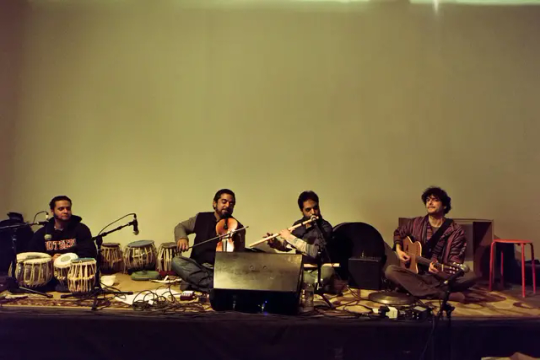
From left, Shiva Ghoshal, Arun Ramamurthy, Jay Gandhi and David Ellenbogen of Brooklyn Raga Massive jamming at Pioneer Works in Brooklyn.Credit...Loren Wohl for The New York Times
By Vivien Schweitzer March 24, 2016
The jeweled raiment and serene kohl-rimmed eyes of Saraswati, the Hindu goddess of knowledge, music and the arts, were projected on a screen behind the stage one recent evening at Pioneer Works, the exhibition and performance space in Red Hook, Brooklyn.
With an ensemble that blended Western instruments and traditional Indian ones, the tabla and sarod, two vocalists — Roopa Mahadevan, wearing a glittery silver sari, and Haleh Kilmer, in dark jeans and boots — sang selections including a tribute to the goddess rendered by Ms. Mahadevan in the haunting melismatic style of southern India. The evening celebrated Indian female cultural figures as well as the female members of the Brooklyn Raga Massive, a dynamic nonprofit collaborative formed in 2012 with a mission to expose new audiences to Indian classical music.
Such weekly events, held in spaces around the city, highlight different elements of the raga, the backbone of Indian music, and conclude with lively late-night jam sessions in which any musician who observes the house rules is welcome to participate. The Massive’s free-floating operations are a vital part of a flowering of Indian music in New York.
On April 6, the collective will offer a birthday tribute to Ravi Shankar, the influential sitar player who collaborated with Western musicians including the violinist Yehudi Menuhin and the flutist Jean-Pierre Rampal. Mr. Shankar’s impact led The New York Times in 1966 to declare that the raga was “becoming a rage in America,” although it deemed it a “curious fad.” The Massive refers to its current contemporary movement as a raga renaissance.
Yet according to Par Neiburger, the artistic director of the World Music Institute, the Massive is unusual in that, in contrast to the top-down traditionalist approach of most Indian musical organizations, with fierce loyalty to individual teachers and a strict guru-disciple hierarchy, its structure is free-form and democratic.
“There is a lot of improvisation in Indian classical music,” Mr. Neiburger said. “But the basic forms lend themselves to a tradition that is kept intact and hasn’t really been modernized in any extreme way.”

Anoushka Shankar, the sitar-playing daughter of the renowned sitarist Ravi Shankar, who plans an American tour in April to promote her new album.Credit...Simon Scheuller
Recent events presented by the Massive at Pioneer Works, where the collaborative is in residence until April 27, have included explorations of the Hindustani music of northern India; Indian film and dance; a collaboration with African musicians like the Malian singer Awa Sangho; and a tribute to George Harrison and the Beatles. Coming events include an exploration of Carnatic music, the idiom of southern India, on Tuesday, March 29, and, on April 13, a lineup mixing Cuban rhythms with raga melodies.
The Massive has also explored the influence of Indian music on prominent Western classical composers like Terry Riley, performing his “In C,” a Minimalist work from 1964, last year at the Rubin Museum; a recording on the Northern Spy Records label is due out later this year. In a concert in September at Le Poisson Rouge in Greenwich Village, it will celebrate the birthday of John Coltrane, who was fascinated by Indian music.
As the central element of Indian music, the raga originated with the ancient Vedic hymns sung in Hindu temples and is intended to create a trancelike spiritual mood. (The word, derived from Sanskrit, translates as “passion” or “color.”) It is composed from scales with ascending and descending patterns that form a melodic framework for improvisation and is associated with seasons, moods and events. Ragas open with an introspective prelude called the alap (performed without percussion) that evolves into a rhythmically invigorating section with percussion that often features virtuoso solo segments.
Ragas are largely monophonic, incorporating drones created by instruments like the tanpura, a long-necked plucked string instrument.
A spellbinding concert presented in February at the 92nd Street Y by the World Music Institute illuminated the Carnatic genre at its most sublime. The violinist L. Subramaniam (whose father, V. Lakshminarayana, expanded the role of the violin in the Carnatic tradition from background to solo instrument) joined his son, Ambi Subramaniam, also a violinist, for a mesmerizing performance.
Gentle wisps of melody shared by the two men slowly unfolded over a drone before morphing into a flurry of imaginatively ornamented, virtuosic riffs. When they were joined by two percussionists (Mahesh Krishnamurthy on the mridangam and Ravi Balasubramanian on the ghatam), the music reached ecstatic heights.
Anoushka Shankar, the daughter of Mr. Shankar and a sitar player who both performs classical Indian music and a fusion incorporating other influences, said in an interview that the traditional music in its pure form is struggling in India, where Bollywood and fusion music promoted by the Indian television series “Coke Studio @ MTV,” are popular. “It’s hard to compete in a short-sound-bite-driven market when a form of music is by nature about a slowly unfolding genre,” said Ms. Shankar, who plans an American tour in April timed to the release of her new album, “Land of Gold.”
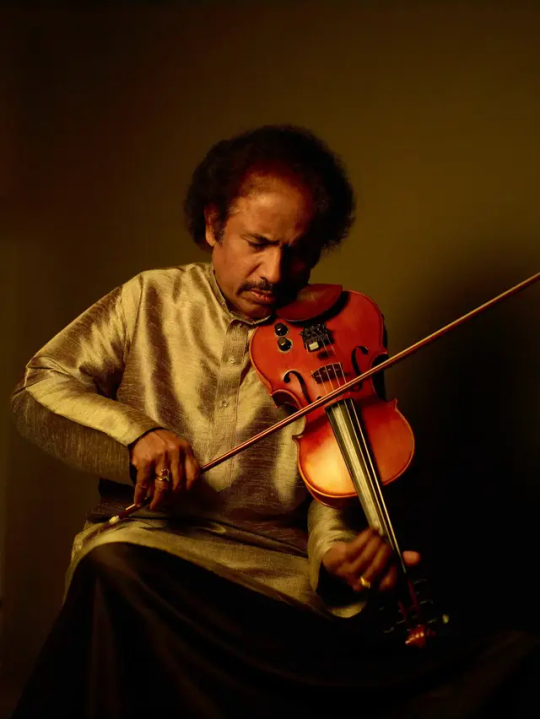
The violinist L. Subramaniam, who performed recently at the 92nd Street Y.
In the United States, Mr. Neiburger of the World Music Institute said, Indian classical music tends not to have “the broad appeal that some other world music genres might have, such as Brazilian music, fado and flamenco.” So the Massive teams up with others eager to attract new American listeners, like the Biryani Boys, a duo consisting of the tabla player David Freeman and the sitar player Mustafa Bhagat who also produce YouTube videos infused with hipster humor and featuring prominent Indian musicians.
On Saturday, April 2, at the Metropolitan Museum of Art, New Yorkers will have the chance to hear some of India’s most prominent musicians. Amjad Ali Khan will perform with his sons, Amaan and Ayaan Ali Khan, the seventh generation of a family of musicians who play the sarod, a long-necked lute prominent in classical northern Indian music.
Many of the Massive members perform Indian classical music in its pure form as well as experimenting with various fusions. An afternoon performance at the Met this month by the sitar player Neel Murgai and the tabla musician Sameer Gupta proved riveting, the soulful alap building in intensity to the colorful fast section called the jhalla.
In a contemporary music scene characterized above all by crossing and blurring genres, it’s possible to find all kinds of collaborations. Mr. Gupta and Mr. Murgai also perform with the violinists Arun Ramamurthy and Trina Basu, both trained in the Carnatic tradition, and the Western-trained cellist Marika Hughes as the Neel Murgai Ensemble. It performs what it describes as “raga chamber jazz,” a blend of Indian forms with everything from Tuvan throat singing to Roma tunes.
Ms. Basu also plays with the cellist Amali Premawardhana, the bassist Perry Wortman and the tabla player Roshni Samlal in the ensemble Karavika, which specializes in a soulful blend of classical and folk traditions from the United States and India.
The Massive members are proud of their open-minded outlook. “New forms are being created that are indigenous to Brooklyn,” Mr. Murgai said. As for the collective’s future goals, Mr. Gupta points out in a lighthearted Massive video that Pioneer Works is not far from the Statue of Liberty in New York Harbor.
“I have a dream,” he said, “that one day the statue won’t have a book and a torch but will have a sitar and a tabla.”
A version of this article appears in print on March 27, 2016, Section AR, Page 12 of the New York edition with the headline: A Raga Renaissance Flowers in Brooklyn.
#Amaan Ali Khan#Amali Premawardhana#Ambi Subramaniam#Amjad Ali Khan#Anoushka Shankar#Arun Ramamurth#Arun Ramamurthy#Awa Sangho#Ayaan Ali Khan#Biryani Boys#David Ellenbogen#David Freeman#George Harrison#Haleh Kilmer#Indian music#Jay Gandhi#Jean-Pierre Rampal#John Coltrane#Karavika#L. Subramaniam#Mahesh Krishnamurthy#Marika Hughes#Mustafa Bhagat#Neel Murgai#Par Neiburger#Perry Wortman#Ravi Balasubramanian#Ravi Shankar#Roopa Mahadevan#Roshni Samlal
0 notes
Text
James Donaldson on Mental Health - Self-Immolation Is Often Part Protest, Part Suicide

What does research on suicide by fire say about the death of Aaron Bushnell? KEY POINTS - Although the word “self-immolation” is used to mean suicide by fire, its etymology connotes “sacrifice.” - In higher-income countries, suicide by fire is more likely among men with a history of mental illness. - Self-immolation often reflects as much a desire to end one's life as a desire to protest a cause. Self-immolation of Thích Qu?ng ??c On February 25, 2024, US airman Aaron Bushnell set himself on fire in front of the Israeli embassy in Washington, DC, in an apparent act of opposition against the ongoing war in Israel and Gaza. Livestreaming the event on Twitch, he identified himself as a member of the US Air Force who was going to “engage in extreme act of protest” because he would “no longer be complicit in genocide,” referring to what was happening to Palestinians at the hands of “their colonizers.”1 He then doused himself in a flammable liquid and shouted “Free Palestine!” several times before igniting himself. He later died from his burn injuries. In the days that followed, news reports emerged that characterized him as an “anarchist” and a former member of a “charismatic sect”2 as well as referencing unspecified evidence of “mental distress”1 leading up to his suicide. Although a similar event received less media attention at the time, another protester of the Israel-Gaza War set herself on fire at the Israeli consulate in Atlanta back in December. She sustained critical burn injuries, but survived, with her actions later attributed to an “extreme political protest.”3 Without knowing more details, what can previous research on self-immolation tell us about why these individuals would engage in such behavior? Protest by Fire Although the word “self-immolation” is used to mean suicide by fire, its etymology connotes “sacrifice.”5 Indeed, self-immolation has been used as a form of protest through the act of suicide for thousands of years in both the East and the West including ancient Greece, 4th-century China, and 17th-century Russia.5 In 1963, the self-immolation of Thích Qu?ng ??c in protest of the US-supported South Vietnamese government’s persecution of Buddhists during the Vietnam War became one the most recognized acts of self-immolation ever, capturing the attention of a horrified President John F. Kennedy and prompting several copy-cat suicides in Vietnam and around the world including in the US. ??c’s act was immortalized in an iconic photo that was widely sold as a postcard and appeared on the cover of Rage Against the Machine’s debut album some 30 years later. Over the past few decades, self-immolation has become more frequent and impactful than we might imagine. In 2001, several people set themselves on fire during protest in Tiananmen Square in Beijing. More than 160 Tibetans have set themselves ablaze since 2009 to bring attention to oppression by de facto Chinese rule.5 In 2010, Mohamed Bouazizi’s self-immolation helped to catalyze the Tunisian Revolution and the wider “Arab Spring” movement that followed. In 2016 and 2019, US military veterans Charles Richard Ingram III and John Watts died by self-immolation to protest the treatment they received through the Department of Veterans Affairs.6 In 2018, David Buckel died by setting himself on fire in Brooklyn’s Prospect Park in support of LGBTQ rights and climate change activism. Self-Immolation and Mental Illness As an act of protest that’s typically performed in a symbolic public setting, self-immolation often has a clear social purpose that includes attracting support to a cause and strengthening the resolve of a resistance group. Consequently, self-immolation has been called an “ultimate act of both despair and defiance, a symbol at once of resignation and heroic self-sacrifice.”4 Still, since it usually results in the death of the protestor, it should also be understood as a form of suicide. This has led to the inevitable question of whether such apparent selfless sacrifice represents not only how important the plight of others is to an individual, but also how little their own life means to them in comparison. In other words, self-immolation may often be as much about sympathy and outrage as it is about self-loathing and self-deprecation, just as it might be as much a form of political protest as a desire for martyrdom, an attempt at redemption or symbolic cleansing, an end to personal suffering, or even a cry for help.6,7 Indeed, a 2011 study found a potentially high rate of mental illness among those who sustained injuries for self-inflicted burns that were not limited to acts of protest, with a wide range of 18 to 92 percent of samples.8 Within lower-income countries where there's a much greater rate of self-immolation compared to higher-income countries, self-immolators were more likely to be younger women without mental illness who were revolting against or seeking an escape from political and social oppression or domestic abuse. Self-immolation is particularly common in the Middle East where as many as 70 percent of all suicides occur by self-immolation.8 A 2018 meta-analysis of studies published between 2000 and 2018 found 5717 cases of self-immolation in Iran with a mean age of 27 years including 70 percent who were women and only 20 percent with mental illness.9 A recent review of studies published between 2000 and 2022 found a similar female predominance among 4,486 self-immolators in Iraq. For such women, self-immolation is often both an act of political protest against oppression and a personal escape through suicide. By contrast, self-immolation in higher-income countries is much less common and occurs more often among men with a history of mental illness (especially mood disorders), previous suicide attempts, and a precipitant in the form of financial difficulties or separation from a partner.8 A study of self-immolation in Greece revealed only 19 cases between 2011 and 2019 with an average age of 63 years including 60 percent who were men and 60 percent with a mental illness such as major depression or psychosis. A new study of 103 cases of self-immolation attributed to both suicide attempts and non-suicidal self-injury treated at the Arizona Burn Center between 2015 and 2022 similarly included 71 percent men and 83 percent who had a psychiatric illness.10 For the most part, these cases did not appear to represent acts of political protest. #James Donaldson notes:Welcome to the “next chapter” of my life… being a voice and an advocate for #mentalhealthawarenessandsuicideprevention, especially pertaining to our younger generation of students and student-athletes.Getting men to speak up and reach out for help and assistance is one of my passions. Us men need to not suffer in silence or drown our sorrows in alcohol, hang out at bars and strip joints, or get involved with drug use.Having gone through a recent bout of #depression and #suicidalthoughts myself, I realize now, that I can make a huge difference in the lives of so many by sharing my story, and by sharing various resources I come across as I work in this space. #http://bit.ly/JamesMentalHealthArticleFind out more about the work I do on my 501c3 non-profit foundationwebsite www.yourgiftoflife.org Order your copy of James Donaldson's latest book,#CelebratingYourGiftofLife: From The Verge of Suicide to a Life of Purpose and Joy www.celebratingyourgiftoflife.com Link for 40 Habits Signupbit.ly/40HabitsofMentalHealth If you'd like to follow and receive my daily blog in to your inbox, just click on it with Follow It. Here's the link https://follow.it/james-donaldson-s-standing-above-the-crowd-s-blog-a-view-from-above-on-things-that-make-the-world-go-round?action=followPub Suicide by Any Other Name So, what can these studies tell us about the mental health of Aaron Bushnell or his female counterpart who set herself on fire back in December to protest the Israel-Gaza War? Not much, really. For one thing, published rates of mental illness have been quite variable (e.g., other studies have found much higher rates of mental disorder among Iranian women) and the reliability of such diagnoses in epidemiological studies is low in any case. Additionally, the presence or absence of a formally diagnosed mental illness doesn’t really say much about one’s mental health. One can have significant mental health issues including a wish to die without having a mental disorder. And whatever the rate of mental illness in a study sample, it doesn’t reliably predict anything at the level of an individual. Still, research to date on self-immolation does invite speculation about why Bushnell might have been dissatisfied with merely protesting the war through political activism and felt the need to sacrifice himself for the cause. His reference to “complicity” suggests the possibility of guilt or moral injury related to his military service. With few close social ties (he'd previously described finding "social interactions very challenging"11) and writing a will, leaving his cat with a neighbor, and bequeathing a refrigerator full of root beer to a friend in the days leading up to his death,2 his self-immolation seems to have been as much a desire to stop the killing in Gaza as a desire to stop himself from living. As for why exactly, we may never know. If you or someone you love is contemplating suicide, seek help immediately. For help 24/7 contact the National Suicide Prevention Lifeline, 1-800-273-TALK, or the Crisis Text Line by texting TALK to 741741. To find a therapist near you, see the Psychology Today Therapy Directory. Read the full article
0 notes